| Revision as of 00:41, 21 December 2024 editDervotNum4 (talk | contribs)Extended confirmed users5,779 edits Undid revision 1264191318 by 2603:6081:4102:7B8B:E9DE:3DCE:EA6:F6E6 (talk) UnexplainedTags: Undo Reverted← Previous edit | Revision as of 09:41, 21 December 2024 edit undo2603:6081:4102:7b8b:418:da8b:f06d:43cd (talk) →East Turkistan: This list is about sovereign states, East Turkestan cannot be considered one at the moment. There is an entire section in this page under "Former states and other territories" which was not utilized.Tags: Manual revert section blankingNext edit → | ||
| Line 337: | Line 337: | ||
| Conversely, ] (1924–2012), under ] second and ] (1973–1974), and ] (1983–2005), is considered the founding father of ].<ref name="Anadolu Agency">{{Cite web |url=https://www.aa.com.tr/en/turkey/turkey-remembers-founding-father-of-northern-cyprus/2108278 |title=Turkey remembers founding father of Northern Cyprus |publisher=Anadolu Agency |language=en |access-date=19 August 2022}}</ref> | Conversely, ] (1924–2012), under ] second and ] (1973–1974), and ] (1983–2005), is considered the founding father of ].<ref name="Anadolu Agency">{{Cite web |url=https://www.aa.com.tr/en/turkey/turkey-remembers-founding-father-of-northern-cyprus/2108278 |title=Turkey remembers founding father of Northern Cyprus |publisher=Anadolu Agency |language=en |access-date=19 August 2022}}</ref> | ||
| ===East Turkistan=== | |||
| ] is considered the father of the nation and one of the most prominent leaders of the ]. He organized the ] which erupted in 1931 into a full national liberation movement and served as the Prime Minister of the ] from 1933 to 1934. | |||
| ===India=== | ===India=== | ||
Revision as of 09:41, 21 December 2024
List of people credited with creating the state "Founding fathers" redirects here. For the founding fathers of the United States, see Founding Fathers of the United States. For the founding fathers of the European Union, see Founding fathers of the European Union. "Founding Father" redirects here. For the short story by Isaac Asimov, see Founding Father (short story). Further information: Father of the Nation
The following is a list of national founders of sovereign states who were credited with establishing a state. National founders are typically those who played an influential role in setting up the systems of governance, (i.e., political system form of government, and constitution), of the country. They can also be military leaders of a war of independence that led to the establishment of a sovereign state.
Africa
Burkina Faso
Maurice Yaméogo was the first Upper Voltese premier of French Upper Volta, being appointed in 1958 and became the first president of the Republic of Upper Volta from 1960 to 1966. Yaméogo was politically disenfranchised and all of his titles were denounced in 1970 under the orders of Sangoulé Lamizana before being rehabilitated in 1991 by Blaise Compaoré as the national founder. In 1984, president of Upper Volta, Thomas Sankara as apart of his socialist and anti-french reforms renamed the country to Burkina Faso as well as adopting the national anthem, Ditanyè, which was written by Sankara himself. In 2023, Sankara was declared the hero of Burkina Faso and the “true” national founder by president Ibrahim Traoré.
Cape Verde
Amílcar Cabral (var. Amílcar Lopes da Costa Cabral) (1924–1973) was an agricultural engineer, writer, and a nationalist thinker and political leader. He was also one of Africa's foremost anti-colonial leaders. Amílcar Cabral led the nationalist movement of Guinea-Bissau and Cape Verde Islands and the ensuing war of independence in Guinea-Bissau. He was assassinated on 20 January 1973, several months before Guinea-Bissau's unilateral declaration of independence. He is considered a founder of Cape Verde. Aristides Pereira served as first President of Cape Verde from 1975 to 1991.
Central African Republic
David Dacko served as first President of Central African Republic from 1960 to 1966. The constitution outlines him as being the "Founding Father."
Democratic Republic of the Congo
Patrice Lumumba, Joseph Kasa-Vubu, Albert Kalonji, Jean Bolikango, Cléophas Kamitatu, and Paul Bolya are all considered "Fathers of Independence" in the Congo.
Egypt
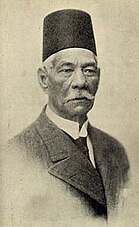
The prevailing historical view is that Muhammad Ali (1769–1849) is the Father of Modern Egypt, being the first ruler since the Ottoman conquest in 1517 to permanently divest the Porte of its power in Egypt. While failing to achieve formal independence for Egypt during his lifetime, he was successful in laying the foundation for a modern Egyptian state.
The Founder of Independent Egypt, Saad Zaghloul (1859–1927), was a politician who served in many ministries of the Egyptian government, and was imprisoned by the British government in Malta, but returned to Egypt to participate in the revolution of 1919. Zaghloul then was able to make the Sultan of Egypt (later King) Fuad I convince the British to grant Egypt independence with a friendly British-Egyptian relationship and in 1922, Egypt was proclaimed an independent kingdom, the Kingdom of Egypt with Saad Zaghloul as its prime minister. British military presence in Egypt ended with nationalisation of Suez Canal in 1956.
Eswatini
Ngwane III was King of kaNgwane from 1745 to 1780. He is considered to be the first King of modern Eswatini.
Ethiopia
Menelik I is claimed to be first the first Emperor of Ethiopia during the 10th century B.C (975–950 B.C). Yekuno Amlak founded the Solomonic dynasty and was the first emperor of the Ethiopian Empire from 1270 to 1285 A.D. Menelik II is the founder of modern Ethiopian state.
Ghana
Kwame Nkrumah (1909–1972) led the nation to its independence from the United Kingdom in 1957.
Guinea
Ahmed Sékou Touré (var. Ahmed Seku Turay) (1922–1984) was a Guinean political leader and President of Guinea from 1958 to his death in 1984. Touré was one of the primary Guinean nationalists involved in the independence of the country from France.
He is with Kwame Nkrumah one of the founders of the African Union, and the Guinean Diallo Telli was the first general secretary of the African Union.
Kenya
Jomo Kenyatta served as the first Prime Minister (1963–1964) and President (1964–1978) of the Republic, after independence from the United Kingdom in 1963. He was the preeminent political figure for independence during the Mau Mau rebellion guerilla war for independence.
Liberia
Joseph Jenkins Roberts (1809–1876) was born a free man of African American descent. He migrated to Liberia in 1829 with his family to join thousands of other African Americans resettled from 1820 based on efforts of the American Colonization Society. In 1839, Roberts became Liberia's lieutenant governor and afterwards, its governor (1841–1848). He is known as the father of Liberia and officially declared Liberia's independence in 1847. The descendants of Roberts and the African American settlers are the Americo-Liberian people.
Libya
King Idris Al-sanusi, also known as Idris I of Libya, (1889–1983) was the first and only king of Libya, reigning from 1951 to 1969, and the Chief of the Senussi Muslim order. Idris as-Senussi proclaimed an independent Emirate of Cyrenaica in 1949. He was also invited to become Emir of Tripolitania, another of the three traditional regions that now constitute modern Libya (the third being Fezzan). By accepting he began the process of uniting Libya under a single monarchy. A constitution was enacted in 1949 and adopted in October 1951. A National Congress elected Idris as King of Libya, and as Idris I he proclaimed the independence of the Kingdom of Libya as a sovereign state on 24 December 1951.
Morocco
The first Moroccan state was established by Idris I in 788. The 'Alawi dynasty, which rules the country to this day, was established by Sharif bin Ali in 1631.
Sultan Mohammed V, who secured Moroccan independence in 1956, declared himself the first King of Morocco in 1957.
Namibia
- Dr. Sam Shafiishuna Nujoma served as first President of Namibia from 1990 to 2005.
- Andimba Toivo ya Toivo was the iconic figure of the Namibian Liberation struggle.
- Hosea Kutako is considered by many as the Father of Namibian Nationalism.
- Hendrik Witbooi was the Nama captain who led the early resistance against Germans in the late 1800s.
- Jonker Afrikaner was the founder of the first rudimentary state in the territory of Namibia.
Nigeria
- Herbert Macaulay (1864–1946)
- Professor Eyo Ita (1903–1972)
- Alvan Ikoku (1900–1971)
- Dr. Nnamdi Azikiwe (1904–1996)
- Chief Obafemi Awolowo (1909–1987)
- Al-Haji Sir Ahmadu Bello (1910–1966)
- Al-Haji Sir Abubakar Tafawa Balewa (1912–1966) served as first Prime Minister of Nigeria from 1957 to 1966. Independence from United Kingdom was achieved in 1960.
- Chief Anthony Enahoro (1923–2010)
- Sir Egbert Udo Udoma (1917–1998)
- Al-Haji Aminu Kano (1920–1983)
- Chief S. A. Ajayi (1910–1994)
- Joseph Tarka (1932–1980)
- Dennis Osadebay (1911–1994)
All are considered founders of Nigeria. The troika of Obafemi Awolowo, Nnamdi Azikiwe, and Ahmadu Bello negotiated Nigeria's independence from Britain, aided by such figures as Chief Funmilayo Ransome-Kuti.
Sierra Leone
Freetown, Sierra Leone was founded in part by a Black American soldier, Thomas Peters in 1792, after managing to convince British abolitionists to help settle 1,192 Black Americans who fought for the British in return for freedom. Peters, alongside other Black Americans David George and Moses Wilkinson, were influential in the establishment of Freetown, but it was Peters who is remembered today as the true influential leader and founder of Sierra Leone. The descendants of Peters and the Black American founders form part of the Sierra Leone Creole or Krio ethnicity today and in 2011, a statue was erected in Freetown to honour him.
Senegal
The founder of modern Senegal is Léopold Sédar Senghor. He served as first President from 1960 to 1980.
Seychelles
James Mancham served as first President of Seychelles from 1976 to 1977. He was one of the last White African presidents in the history of Africa. He considered himself the self-proclaimed "Founding Father"; however this title is often attributed to his socialist successor France-Albert René, who led the country to become one of the most democratic and most economically stable states in Africa.
Somalia
The Somali Youth League played a major role for Somalia's independence since the 1940s, with two of its members having served as the first two Somali presidents, Aden Adde and Abdirashid Shermarke. There are several murals and monuments dedicated to the SYL's independence movement in Mogadishu.
Republic of Somaliland
Mohamed Haji Ibrahim Egal was the founder and first prime minister of Somaliland.
Republic of South Africa
Nelson Mandela (1918–2013) was the President of South Africa, in office from 1994 to 1999. He led the negotiations, together with F. W. de Klerk, to racially integrate and unite the country.
Other anti-apartheid activists include:
- Winnie Madikizela-Mandela
- Oliver Tambo
- Walter Sisulu
- Govan Mbeki
- Joe Slovo
- Ahmed Kathrada
- Raymond Mhlaba
- Robert Sobukwe
- Joe Modise
- Jacob Zuma
- Chris Hani
- Desmond Tutu
South Sudan
- John Garang was the main figure involved in spawning and leading the South Sudanese Independence Movement. Even though he did not live to see his country attain independence, he is often regarded as the "Father of the Nation."
- Salva Kiir Mayardit serves as first President of South Sudan from 2011 to present.
Tanzania

Being the first President of Tanzania, Julius Nyerere was the main figure involved in achieving Tanzania's independence. He is often regarded as the "Father of the Nation."
Tunisia
Habib Bourguiba, considered the founder of modern Tunisia, led Tunisia to independence from France in 1956 as prime minister, then abolished its monarchy and served as the country's first President from 1957 to 1987; during his leadership, he modernized Tunisia, built schools and hospitals, and gave Tunisian women better human rights than other countries, and these rights still continue to be exercised by Tunisian women to this day.
Uganda
Milton Obote was a Ugandan political leader who led Uganda to independence from British colonial rule in 1962. Following the nation's independence, he served as prime minister of Uganda from 1962 to 1966 and the second president of Uganda from 1966 to 1971, then again from 1980 to 1985.
Zambia

Kenneth Kaunda (1924–2021) is the prominent icon in the independence and unification of Zambia. He served as first President from 1964 to 1991. However, there are important personalities like Simon Kapwepwe and Harry Nkumbula (1916–18) that fairly deserve recognition. Together, in their different capacities, they led the nation to freedom.
Zimbabwe
Abel Muzorewa (1925–2010) was the first black Prime Minister of Zimbabwe Rhodesia.
Robert Mugabe (1924–2019) was the leader of ZANU-PF (Zimbabwe African National Union – Patriotic Front), who ruled Zimbabwe from 1980 to 2017.
Others
- Rekayi Tangwena
- Tichafa Samuel Parirenyatwa
- Joshua Nkomo
- Leopold Takawira
- Simon Muzenda
- Ndabaningi Sithole
- Herbert Chitepo
- Josiah Tongogara
- Enos Nkala
- Edgar Tekere
- George Nyandoro
- James Chikerema
- Solomon Mujuru
- Alfred Nikita Mangena
- Josiah Tungamirai
- Jason Ziyaphapha Moyo
- George Silundika
- Dumiso Dabengwa
- Lookout Masuku
Americas
Argentina

The military commander José de San Martín was one of the most important figures of the War of Independence (1810–1818) in Argentina, where he is known as the "Father of the Homeland" (Spanish: Padre de la Patria) and the date of his death (or "Passage to Immortality"; "Pasaje a la Inmortalidad in Spanish) is commemorated as a national holiday. One of the main libertadores of the Spanish American wars of independence, San Martín played a crucial role in the expulsion of royalist forces not only from Argentina but also from Chile and Peru, where he is thus also celebrated as a national hero. One of his most celebrated feats is the 1817 Crossing of the Andes, when he crossed the mountain range from present-day Argentina to present-day Chile, in a surprise attack on royalist forces.
Manuel Belgrano, another important leader of the War of Independence and creator of the flag of Argentina, is also widely regarded as a national hero.
María Remedios del Valle, an Afro-Argentine camp follower turned soldier who participated in the War of Independence, is regarded as the "Mother of the Homeland" (Spanish: Madre de la Patria).
Bahamas
Lynden Pindling is considered the "Father of the Nation". He served as first Prime Minister of the Bahamas from 1967 to 1992. Independence from United Kingdom was achieved in 1973.
Barbados
Errol Barrow (1920–1987) is often referred to as the Father of Independence of Barbados. Initially a World War II pilot and then a lawyer, he founded the Democratic Labour Party in 1955 after defecting from the Barbados Labour Party. He served as the third and final premier of Barbados (serving from 1961 to 1966) and lead Barbados to independence from the British Empire in 1966. He became the country's first prime minister and served two terms (1966–1976 and 1986–1987) and died in office from illness in 1987.
Belize
George Cadle Price (1919–2011) is considered to be the Father of the Nation of Belize. He served as head of government of British Honduras, later Belize from 1961 to 1984. Independence from United Kingdom was achieved in 1981.
Bolivia
Simón Bolívar (1783–1830) and Antonio José de Sucre (1795–1830) are considered to be the founders of Bolivia.
Brazil

Pedro Álvares Cabral (1467/68–1520) commander of the first Portuguese fleet to arrive in South America.
José Bonifácio de Andrada (1763–1838), known as "Patriarch of Independence", is considered the maximum leader of the independence movement because of his intellectual mentorship and political prominence, and Pedro I of Brazil (1798–1834), son of the King João VI of Portugal, the symbol of the "center of force and union", according to the Bonifácio strategy.
Canada
Main article: Fathers of ConfederationThe name "Fathers of Confederation" is given to those who attended the Charlottetown and Quebec Conferences in 1864, and the London Conference of 1866, to establish the Canadian Confederation. There were 36 original Fathers of Confederation.
Queen Victoria, who supported and encouraged this process, is known as the Mother of Confederation. She was the first Monarch under the 1867 Constitution and personally chose Ottawa as Canada's capital city. The political leaders who brought the other provinces into Confederation after 1867 are also referred to as "Fathers of Confederation".
Caribbean Community
Errol Barrow (Barbados: 1920–1987); Forbes Burnham (Guyana: 1923–1985); Michael Manley (Jamaica: 1924–1997); and Eric Williams (Trinidad and Tobago: 1911–1981) were the leaders who brought forth regional integration among the Caribbean Community.
Chile

Bernardo O'Higgins (1778–1842) and José Miguel Carrera (1785–1821) are usually considered the founders of Chile. Diego Portales (1793–1837) is sometimes considered due to his influence in the 1833 Constitution.
Colombia
Simón Bolívar, was founder of Gran Colombia, which also included Panama, Ecuador, and Venezuela. Francisco de Paula Santander wrote the first constitution of Colombia. Antonio Nariño ("Precursor of the Independence") and Camilo Torres were the most relevant statesmen of the First Republic.
Costa Rica
Juan Mora Fernández, first Head of State of Costa Rica. José María Castro Madriz, First President of the Republic and proclaimed "Founder of the Republic" by Congress Juan Rafael Mora Porras, President during Costa Rica's campaign against William Walker, proclaimed "Hero and Liberator" by Congress.
Cuba
Carlos Manuel de Céspedes is considered the Cuban Founding Father. In 1868 he freed his slaves and declared the independence of Cuba, which began the Ten Years' War (1868–1878).
José Martí is a Cuban national hero.
Modern day Cuba was shaped by Fidel Castro with help from Che Guevara during the Cuban Revolution.
Dominican Republic
Matías Ramón Mella (1816–1864), Juan Pablo Duarte (1813–1876) and Francisco del Rosario Sánchez (1817–1861) are considered the Fathers of the Country. Duarte is featured on the $1 coin and on the now discontinued $1 bill; Sanchez on the $5 coin and on the also discontinued $5 bill; Mella on the $10 coin and on the also discontinued $10 bill.
Ecuador
Jose Joaquin Olmedo took this as a cue to declare Ecuador's independence at a junta in Guayaquil in 1820.
El Salvador
José Matías Delgado is considered to be the "Father of the Salvadoran Fatherland".
Guatemala
In 1523, Pedro de Alvarado, a member of Hernán Cortés' group that conquered Mexico, was sent to conquer the area of land below Mexico that is known today as Guatemala.
Haiti
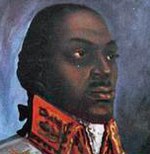
Toussaint Louverture (1743–1803) and Jean-Jacques Dessalines (1758–1806) were revolutionary and early political leaders of Haiti. Henri Christophe and Alexandre Pétion were also important figures of early Haiti.
Honduras
Founders of the Honduran Nation are José Cecilio del Valle (1777–1834), Dionisio de Herrera (1781–1850), Francisco Morazán (1792–1842), José Trinidad Reyes (1797–1855), and José Trinidad Cabañas (1805–1871).
Jamaica
Norman Manley is particularly noted for his role in securing universal suffrage for the country's population in 1944 along with founding the People's National Party. Manley also served as Chief Minister of Jamaica from 1955 to 1962. Alexander Bustamante was an influential union leader and as founder of the Jamaican Labour Party. Bustamante served as the then colony's first Chief Minister from 1953 to 1955 and later went on to lead Jamaica to independence from the United Kingdom in 1962, becoming the country's first Prime Minister.
Mexico
According to the decrees of the Congress of the Union of Mexico issued in 1822 and 1823, the Mexican founders are Miguel Hidalgo y Costilla (1753–1811), Ignacio Allende (1769–1811), Juan Aldama (1774–1811), Mariano Abasolo (1783–1816), José María Morelos (1765–1815), Mariano Matamoros (1770–1814), Leonardo Bravo (1764–1812), Miguel Bravo (unknown–1814), Hermenegildo Galeana (1762–1814), Mariano Jiménez (1781–1811), Xavier Mina (1789–1817), Pedro Moreno (1775–1817), and Víctor Rosales (1776–1817).
Nine of the thirteen founders are buried in the Monument to Independence in Mexico City.
Nicaragua
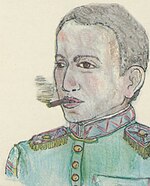
José Anacleto Ordóñez (1778–1839) is recognised as the "First Popular Caudillo of Nicaragua", as he led the state to independence by revolting against the pro Mexican government in 1823. Later he served as Head of State of Nicaragua within the Federal Republic of Central America.
José Núñez (1800–1880) and Joaquín del Cossío (1789–unknown) were the most important figures in Nicaragua's Independence, as they started the first and second transitional governments that declared to the State's Independence from the FRCA in 1838.
Fruto Chamorro (1804–1855) is considered as "Founder of the Republic", as he initiated the 1854 Constitution which formally declared Nicaragua a Republic.
Panama
The first Spanish settlement in Panama was made in 1510. Then on 25 September 1513, Vasco Nunez de Balboa became the first European to see the Pacific Ocean (which he called the South Sea and which he claimed for Spain). Then in 1519 Pedro Arias de Avila founded Panama City.
Paraguay
José Gaspár Rodríguez de Francia is considered the founder of Paraguay. He was named perpetual dictator as of the country's formation. Although he was the one that ended up ruling the country, Rodríguez de Francia was not the only prócer of the 1811 revolution, others include: Fulgencio Yegros, Pedro Juan Caballero, Fernando de la Mora, Mauricio José Troche and Vicente Ignacio Iturbe. Yegros also served as consul alongside Francia, shortly before being deposed by him.
General Andrés Rodríguez was the first democratically elected president of Paraguay, shortly after leading the 1989 coup that ended Alfredo Stroessner's dictatorship. This is why he is often considered the father of modern Paraguay.
Peru
José de San Martín and Simón Bolívar led Peru to independence and forged the country.
South America

José de San Martín, Simón Bolívar, Antonio José de Sucre, Francisco de Paula Santander, Francisco de Miranda have been referred to as the founding fathers of the region comprising modern day Argentina, Chile, Venezuela, Colombia, Peru, Ecuador, Bolivia and Panama.
Uruguay
José Gervasio Artigas is considered to be the founder of Uruguay. He was a staunch democrat and federalist, opposed to monarchism and centralism.
United States
Main article: Founding Fathers of the United States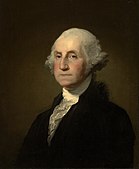
The single person most identified as "Father" of the United States is George Washington, a general in the American Revolution and the 1st President of the United States. Washington was part of a larger group of revolutionaries known as the "Founding Fathers". Within the Founding Fathers, there are two key subsets, the Signers (who signed the Declaration of Independence in 1776) and the Framers (who were delegates to the Federal Convention and took part in framing or drafting the proposed Constitution of the United States). Some historians have suggested a revised definition of the "Founding Fathers", including a significantly broader group of not only the Signers and the Framers but also all those who, whether as politicians, jurists, statesmen, soldiers, diplomats, and ordinary citizens took part in winning U.S. independence and creating the United States of America.
American historian Richard B. Morris, in his 1973 book Seven Who Shaped Our Destiny: The Founding Fathers as Revolutionaries, identified the following seven figures as the key founders: John Adams, Benjamin Franklin, Alexander Hamilton, John Jay, Thomas Jefferson, James Madison, and Washington.
Venezuela
Simón Bolívar (1783–1830) is considered to be the founder not only of Venezuela, but of many of the region's countries as the Gran Colombia, which also included Panama, Ecuador, and Colombia. José Antonio Páez led the separation of Venezuela from the Gran Colombia and formed the modern statehood of the country. Scholars credit president Rómulo Betancourt as the founding father of modern democratic Venezuela, and Hugo Chávez as the founding father of modern democratic-dictatorship Venezuela.
Asia
Afghanistan

Ahmad Shah Durrani (1723–1773) unified the Afghan tribes and founded Afghanistan in 1747. His mausoleum is next to the Shrine of the Cloak in Kandahar, Afghanistan, where he is fondly known as Ahmad Shah Baba (Ahmad Shah the Father).
However, the founding father of modern Afghanistan is Mohammad Zahir Shah, the last King of Afghanistan. Due to this, the Afghan parliament gave him the title of "Father of the Nation."
Armenia

- Hayk Nahapet is considered the traditional founder of Armenia to which he gave his namesake (Hayk/Hayastan) and occasionally as the ancestor to all Armenians. He was explained in the Movses Khorenatsi book "History of Armenia (book) to have established Armenia as a home for his people around Lake Van where Hayk and his people battled with and were then free from the tyranny of the Neo Assyrian Empire and Nimrod in 2492 BC.
- Aram Manukian is considered the founder of the First Republic of Armenia.
Azerbaijan
Mammad Amin Rasulzade (Azerbaijani: Məhəmməd Əmin Axund Hacı Molla Ələkbər oğlu Rəsulzadə, Turkish: Mehmed Emin Resulzâde; (1884–1955) was an Azerbaijani statesman, scholar, public figure and one of the founding political leaders of Azerbaijan Republic (1918–1920). His expression "Bir kərə yüksələn bayraq, bir daha enməz!" ("The flag once raised will never fall!") became the motto of the independence movement in Azerbaijan in the 20th century.
Bangladesh

- The first Sultan of Bengal, Shamsuddin Ilyas Shah, is often credited for unifying the Bengal region (which he named Bangalah) under a single politico-social and linguistic identity (Bangali people) in 1352.
- Sheikh Mujibur Rahman, known with the honorary title Bangabandhu, is considered by many as the founding leader of Bangladesh. He led Bengali nation to the decade long struggle for independence against then autocratic rule of Pakistan, finally resulting in the Bangladesh Liberation War and the independence of Bangladesh in 1971.
- Abul Kasem Fazlul Huq, Huseyn Shaheed Suhrawardy and Abdul Hamid Khan Bhashani are considered as three primary founders of Bangladesh, who shaped the Bengali nationalism since the days of British rule.
Apart from the founding leaders, the four key members of the Liberation Wartime government vice-president Syed Nazrul Islam, prime minister Tajuddin Ahmad, finance minister Muhammad Mansur Ali and home minister Abul Hasnat Muhammad Qamaruzzaman (altogether known as 'Four National Leaders') and the Liberation Wartime armed forces chief Muhammad Ataul Gani Osmani are hailed as vital figures in Bangladesh's independence.
Bhutan
Ngawang Namgyal (1594–1651) fled Tibet and unified the fiefdoms of Bhutan. He established the dual system of shared power between secular and Buddhist leadership that continues as a tradition to the present.
Brunei
According to local historiography, the country of Brunei was founded by Awang Alak Betatar, later to be Sultan Muhammad Shah, reigning around AD 1400.
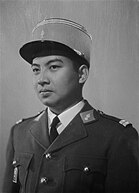
Cambodia
Kaundinya I was the founder of ancient Khmer kingdom of Funan.
Jayavarman II (770–850) was the founder of the Khmer Empire.
Norodom Sihanouk (1922–2012) declared Cambodia's independence from France in 1953 and is regarded as the nation's founding father.
China
For a list of founders of major Chinese dynasties, see Dynasties in Chinese history.The Yellow Thearch is revered as the legendary initiator of Chinese civilization, one of the cradles of civilization.
Yu the Great is conventionally regarded as having inaugurated dynastic rule in China by establishing the Xia dynasty, the first orthodox dynasty of China, in circa 2070 BC.
In 221 BC, the State of Qin completed the conquest of the various Chinese kingdoms of the Warring States period and formed the first unified Chinese empire, the Qin dynasty. Its monarch then took the title of Huángdì (皇帝; "Emperor") to reflect his prestigious status vis-à-vis prior rulers, thus becoming Qin Shi Huang.
Sun Yat-sen was the founding father of the Republic of China and served as its first provisional president. He was officially conferred the title of Guófù (國父; "Father of the Nation") by the Nationalist government in AD 1940. Today, he is still officially recognized as such in the Taiwan Area where the Republic of China continues to rule, while the People's Republic of China considers him the Gémìng Xiānxíngzhě (革命先行者; "Forerunner of the Revolution").
Mao Zedong is regarded as the founder of the People's Republic of China, even though the state has yet to officially confer the title "Father of the Nation" upon anyone.
 Yellow Thearch
Yellow Thearch Yu the Great
Yu the Great Qin Shi Huang
Qin Shi Huang Sun Yat-sen
Sun Yat-sen Mao Zedong
Mao Zedong
Cyprus
Makarios III (1913–1977), archbishop and primate of the autocephalous Eastern Orthodox Church of Cyprus (1950–1977), and first president of Cyprus (1960–1977), is widely regarded by Greek Cypriots as the Father of the Nation or "Ethnarch".
Conversely, Rauf Denktaş (1924–2012), under Makarios III second and last Vice President of Cyprus (1973–1974), and first President of Northern Cyprus (1983–2005), is considered the founding father of Northern Cyprus.
India

Mahatma Gandhi (1869–1948) is considered the father of the nation and one of the most prominent leaders of the Indian independence movement. He is featured on the Indian rupee.
Indonesia
The 4 general founders of Indonesia are generally considered to be Mohammad Hatta, Sukarno, Sutan Syahrir and Tan Malaka. Sukarno is considered to be a founding father by some Indonesians, although he had an authoritarian rule during the time of his presidency. Mohammad Hatta is generally considered as one of the more democratic founder of Indonesia. They both signed the Proclamation of Independence, proclaiming the independence of Indonesia from the Netherlands on 17 August 1945. A day later, they were elected respectively as the first President and Vice President of Indonesia.
As the Netherlands did not recognize the proclamation of independence immediately, both of them were prominent figures and were seen as symbol of unity among Indonesian people to fight against Dutch during the National Revolution from 1945 to 1949. In August 1949, Hatta headed a delegation to The Hague for a Round Table Conference which then led to the recognition of Indonesian independence by the Netherlands on 27 December 1949.
 Sukarno
Sukarno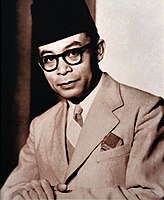 Mohammad Hatta
Mohammad Hatta Sutan Sjahrir
Sutan Sjahrir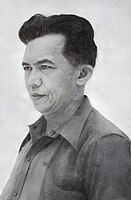 Tan Malaka
Tan Malaka
Iran
Cyrus the Great (600–530 BC) was the founder of the First Persian Empire under the Achaemenid dynasty. Many Iranians gather at his tomb in Pasargadae annually on the Cyrus the Great Day and Nowruz, the Persian New Year. Prior to the 1979 Revolution the 2,500th year of Foundation of Imperial State of Iran took place. It consisted of an elaborate set of festivities that took place on 12–16 October 1971 on the occasion of the 2,500th anniversary of the founding of the Imperial State of Iran and First Persian Empire by Cyrus the Great. The intent of the celebration was to demonstrate Iran's old civilization and history to showcase its contemporary advancements under Mohammad Reza Pahlavi, the last Shah of Iran.
Ruhollah Khomeini is considered the founder of the modern Islamic Republic of Iran.
Israel
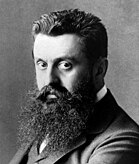
Theodor Herzl is considered the founder of political Zionism, the modern ideology that institutionalized the longstanding Jewish desire to return to the homeland, which eventually lead to the founding of Israel decades later.
David Ben-Gurion was the first Prime Minister of Israel, and is often considered an important founding figure as well as a leader of Labor Zionism, Israel's founding ideology. Ben-Gurion lead Israel for a total of thirteen years and is today admired by both the left and the right.
Other figures include Moshe Dayan, who became a war hero and symbol of the Israel Defense Forces and Eliezer Ben-Yehuda who led the revival of the Hebrew language.
Japan
Emperor Jimmu (神武天皇, Jinmu-tennō) (traditional reign 660–585 BC) was the first emperor of Japan, according to the traditional order of succession. The Japanese national holiday National Foundation Day (建国記念の日, Kenkoku Kinen no Hi) is celebrated annually on 11 February in commemoration of the founding of the nation of Japan and the ascension of Emperor Jimmu to the imperial throne.
Jordan

Abdullah bin Al-Hussain was the founder and ruler of the Jordanian realm from 11 April 1921 until his assassination on 20 July 1951.
He was the Emir of Transjordan, a British protectorate, until 25 May 1946, after which he was the king of an independent Jordan. He was a 38th-generation direct descendant of Muhammad, as he belongs to the Hashemite family.
Kazakhstan
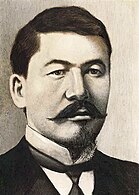
| This section does not cite any sources. Please help improve this section by adding citations to reliable sources. Unsourced material may be challenged and removed. (June 2020) (Learn how and when to remove this message) |
There is no law in the country which officially recognizes a single individual as the "Father of the Nation". Either title may be associated with any of the following prominent historical persons, owing to their impact on the country during their respective times.
Alikhan Bukeikhanov (1866–1937) was a Kazakh statesman, politician, publicist, teacher, writer and environmental scientist. He was leader and founder of the Alash Orda national liberation movement. He sided with the westernizers in the Kazakh political scene who were promoting the idea of the Western culture into the Kazakh steppe. In 1920, after the establishment of Soviet hegemony, Bukeikhanov joined the Bolshevik party and returned to scientific life. His earlier political activities caused the authorities to view him with suspicion, leading to arrests in 1926 and 1928. In 1926, Bukeikhanov was arrested on the charge of counter-revolutionary activity and put into Butyrka prison in Moscow. But due to the lack of evidence in the criminal case against him, he was released from prison. In 1930, the authorities banished him to Moscow, where he was arrested a final time in 1937 and executed.
Dinmukhamed Kunayev (1912–1993) was a Kazakh Soviet communist politician. He became first secretary of the Central Committee of the Communist Party of Kazakhstan again in 1964 when Khrushchev was ousted and replaced by Brezhnev. He kept his position for twenty-two more years. He was an alternate member of the Politburo from 1967, and a full member from 1971 to 1987. During Kunayev's long rule, Kazakhs occupied prominent positions in the bureaucracy, economy and educational institutions. A Brezhnev loyalist, he was removed from office under pressure from Mikhail Gorbachev, who accused him of corruption. On 16 December 1986 the Politburo replaced him with Gennady Kolbin, who had never lived in the Kazakh SSR before. This provoked street riots in Almaty, which were the first signs of ethnic strife during Gorbachev's tenure. In modern Kazakhstan, this revolt is called Jeltoqsan, meaning December in Kazakh.
Nursultan Nazarbayev was elected the nation's first president following its independence from the Soviet Union in December 1991. In 2010 Parliament of Kazakhstan named him Елбасы (Elbasy) which means "Leader of the Nation".
North Korea

Kim Il-sung was the founder of North Korea. He ruled from 1948 to 1994. After his death, he was declared as the Eternal President of North Korea in 1998.
South Korea
Dangun, the legendary first king of Gojoseon, is venerated in Korea as the founder of the Korean nation and peoples. His legendary birthday and the day he founded Gojoseon is celebrated as National Foundation Day (개천절), which falls on 3 October. There have been many founders throughout history such as Lee Seonggye, Taejo Wang Geon, and Dongmyeong the great.
There is no official founding father of South Korea who is generally accepted nor acknowledged by the government, though some figures like Syngman Rhee or Kim Ku are proposed as the father of his country.
Kuwait
The first recorded ruler of Kuwait was Sheikh Abu Salman Sabah. However, Sheikh Mubarak Al-Kabir is known as the founder of the modern state of Kuwait. He was instrumental in moving the country away from the Ottoman Empire and toward British influence.
Laos
Fa Ngum is widely considered a founding father of the Lao people. In present-day Laos, Kaysonne Phomvihane and Prince Souphanouvoung are considered the fathers of the Marxist–Leninist state.
Malaysia

Tunku Abdul Rahman (1903–1990) usually known as "the Tunku" (a princely title in Malaysia), and also called Bapa Kemerdekaan (Father of Independence) or Bapa Malaysia (Father of Malaysia), was Chief Minister of the Federation of Malaya from 1955, and the country's first Prime Minister from independence in 1957. He remained Prime Minister after Sabah, Sarawak, and Singapore joined in 1963 to form Malaysia.
Mongolia
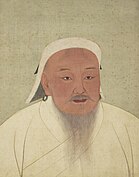
Genghis Khan (c. 1162–1227), who by uniting the nomadic tribes founded the Mongol Empire, is generally regarded as the father of modern-day Mongolia. Although downcast during the communist-era, Genghis Khan's reputation surged after the democratic revolution in 1990.
Myanmar
Anawrahta is considered to be founder of ancient Burmese Kingdom of Pagan.
General Aung San is the founder of modern Burma (also known as Myanmar). Although he did not live to see the country's independence, he is credited in forming the basic structure of the independence movement and government. Aung San started his political career in 1930 as the editor of Rangoon University's newspaper – where he accused one of the colonial administrators in Burma of misconduct. In late 1940 he went to Japanese controlled Taiwan and Xiamen to receive military training, and he led the Burma Independence Army, spearheading the Japanese invasion of Burma. Later, he switched sides to the Allies, and helped in the Burma campaign. After the war, he was appointed to the government of a returning British administration, and was able to negotiate Burma's independence. He helped organized the Panglong Agreement in February 1947, achieving independence for all Burmese territories. However, on Saturday, 19 July 1947, Aung San, along with his cabinet ministers, was assassinated at the secretariat building in Rangoon.
U Nu served as first Prime Minister of Myanmar from 1948 to 1956.
General Ne Win was one of the founders of Tatmadaw. On 1962, 15 years after the independence, he led a military coup that brought him to power. Ne Win established the Burmese Way to Socialism which ruled Burma for 26 years.
Nepal
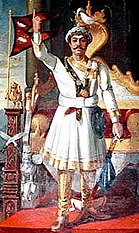
Prithvi Narayan Shah was largely responsible for the unification of Nepal, and is considered to be the founder of Nepal. His vision of ruling over a unified Nepal is said to have started when atop a hill near Nepa Valley (Present day Kathmandu), he decided he would like to rule over it. His strategic plan was very successful and his successors continued to build on his progress. Prithvi Narayan Shah's descendants continued to rule over Nepal for a total of 240 years before the 2006 democracy movement in Nepal toppled the constitutional power exercised by King Gyanendra, before abolishing the monarchy in 2008.
Oman
Sultan Qaboos bin Said changed the name of the country from the Sultanate of Muscat and Oman to simply Oman.
Pakistan

Pakistan's founder is Muhammad Ali Jinnah, who is hailed as Quaid-e-Azam or "Great Leader" and Baba-e-Qaum or Father of Nation. He founded not only the Islamic Republic of Pakistan but is credited for creating an entirely new nation state. Other prominent founders include the poet Muhammad Iqbal or spiritual Father, believed to be the first person to propagate the idea of a state for India's Muslims, Fatima Jinnah (Mother of nation) and members of Pakistan's first Cabinet such as Liaquat Ali Khan, A. K. Fazlul Huq, Abdul Rab Nishtar, Malik Feroze Khan Noon, Khwaja Nazimuddin and I. I. Chundrigar.
Some historians credit the Muslim reformist Sir Syed Ahmad Khan as a founder of Pakistan because he provided the Two-Nation Theory which played a central role in the perception of Pakistan and its Muslim nationalist ideology largely based on Iqbal's philosophy and views.
Palestine

Palestinian political leader Yasser Arafat has been considered by some commentators as being the "founding father" of Palestine. Born in 1929 in Cairo, Egypt, Arafat soon became a supporter of Arab nationalism and anti-Zionism; in the 1948 Arab–Israeli War, he fought alongside the Muslim Brotherhood against the newly independent State of Israel. From 1969 until 2004, he served as the chairman of the Palestine Liberation Organization (PLO), a Palestinian nationalist organization which engaged in a numerous guerrilla conflicts with the Israel Defense Forces during the second half of the 20th century.
Beginning from 1983 onwards, Arafat based himself in Tunisia and switched to a tactic of negotiating with the Israeli government, acknowledging Israel's right to exist in a UN resolution and supporting a two-state solution to the Israeli–Palestinian conflict. Arafat engaged in a series of negotiations with the Israeli government to end the conflict between it and the PLO, including the Madrid Conference of 1991, the 1993 Oslo Accords and the 2000 Camp David Summit. In 1994, he returned to Palestine and promoted self-government for the Palestinian territories, receiving the Nobel Peace Prize the same year. Among Palestinians, Arafat is viewed as a martyr who symbolized the national aspirations of his people.
Philippines
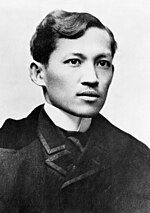
| This section does not cite any sources. Please help improve this section by adding citations to reliable sources. Unsourced material may be challenged and removed. (June 2020) (Learn how and when to remove this message) |
There is no law in the Philippines which officially recognizes any single individual as the "Father of the Nation". Either title may be associated with any of the following prominent historical persons, owing to their impact on the country during their respective times: José Rizal (1861–1896) was a Filipino nationalist during the tail end of the Spanish colonial period of the Philippines. An ophthalmologist by profession, Rizal became a writer and a key member of the Filipino Propaganda Movement which advocated political reforms for the colony under Spain. He was executed by the Spanish colonial government for the crime of rebellion after an anti-colonial revolution, inspired in part by his writings, broke out. Though he was not actively involved in its planning or conduct, he ultimately approved of its goals which eventually led to Philippine independence. He is widely considered one of the greatest heroes of the Philippines, and is implied by Philippine law to be one of the national heroes. He was the author of the novels Noli Me Tángere, and El Filibusterismo, and a number of poems and essays. Andrés Bonifacio (1863–1897) rebel leader during the Philippine Revolution in 1896, which saw armed resistance against the Spanish Empire. Emilio Aguinaldo (1869–1964) Military Leader with the highest rank of Generalissimo of the Philippine Revolution and first president of the Philippines through the 1899 Malolos Congress, which oversaw the promulgation of the Malolos Constitution. Manuel Roxas (1892-1948) served as first President of independent Philippines from 1946 to 1948.
Qatar
Sheikh Jassim Bin Mohammed Bin Thani is the founder of the State of Qatar. He was a military leader, judge and scholar, knight and poet possessing both gallantry and magnanimity.
Saudi Arabia
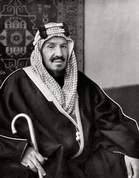
Abdulaziz Al Saud, also known as Ibn Saud, is the founding father of the Kingdom of Saudi Arabia. He served as first King from 1932 to 1953.
Singapore

Lee Kuan Yew (1923–2015), often referred to by his initials "LKY", was the first prime minister of the Republic of Singapore, governing for three decades, from 1959 to 1990. Lee has helped to build the economy from a third world country to a first world country and turned Singapore into a metropolis after the separation from Malaysia in 1965.

Sri Lanka
Prince Vijaya is considered to be the first King of Sri Lanka with Dutugemunu honored as the first king to unify Sri Lanka. D. S. Senanayake (1883–1952) is widely known as the modern (post independence) father of the nation. William Gopallawa (1896–1981) was the first Constitutional President while J. R. Jayewardene (1906–1996) was the first Executive President.
Thailand
- Si Inthrathit (1238 - 1270) was the founder of Sukhothai Kingdom, the first Thai kingdom.
- Naresuan (1590–1605), who retook most of Siam from the Burmese
- Taksin the Great (1734–1782), who reunited Siam following the collapse of the Ayutthaya Kingdom.
- Rama I (1737–1809), founder of the Rattanakosin Kingdom and the first monarch of the reigning Chakri dynasty of Siam.
Turkey
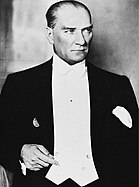
- Alp Arslan (1029–1072) was the second Sultan of the Seljuk Empire. He greatly expanded the Seljuk territory and consolidated his power, defeating rivals to the south and northwest, and his victory over the Byzantines at the Battle of Manzikert, in 1071, ushered in the Turkoman settlement of Anatolia.
- Osman I (1258–1324), was the leader of the Kayi tribe and the founder of the Ottoman dynasty.
- Mehmed the Conqueror (1432–1481), was an Ottoman sultan who ruled from August 1444 to September 1446, and then later from February 1451 to May 1481. When he ascended the throne again in 1451 he strengthened the Ottoman navy and made preparations to attack Constantinople. At the age of 21, he conquered Constantinople (modern-day Istanbul) and brought an end to the Byzantine Empire.
- Mahmud II (1785–1839) was the 30th Sultan of the Ottoman Empire from 1808 until his death in 1839. His reign is recognized for the extensive administrative, military, and fiscal reforms he instituted, which culminated in the Decree of Tanzimat ("reorganization"). Mahmud's reforms included the 1826 abolition of the conservative Janissary corps, which removed a major obstacle to his and his successors' reforms in the Empire. The reforms he instituted were characterized by political and social changes, which would eventually lead to the birth of the modern Turkish Republic.
- Mustafa Kemal Atatürk (1881–1938) was the founder and first president of the Republic of Turkey. Following the First World War, the huge conglomeration of territories and peoples that formerly comprised the Ottoman Empire was divided into several new states. The Turkish War of Independence (1919–1923), initiated by Mustafa Kemal Atatürk and his colleagues in Anatolia, resulted in the establishment of the modern Republic of Turkey (Türkiye Cumhuriyeti) in 1923. He subsequently introduced many radical reforms with the aim of transforming the old multinational Ottoman state into a new secular republic.
United Arab Emirates
Initially independent emirates part of the Trucial states, Zayed bin Sultan Al Nahyan established the United Arab Emirates by joining the seven independent emirates into a federation.
Uzbekistan
In Uzbekistan, no single individual is officially recognized as the "Founder of the Nation." However, different figures have been viewed as founders of Uzbekistan during various eras throughout history.


Amir Timur is widely regarded as the main historical hero for modern Uzbekistan, as he founded the Timurid Empire and made significant contributions to the development of Uzbek Statehood.
Another significant historical figure, Muhammad Shaybani, is considered to be a significant founder of the nation due to his proximity in time to the establishment of the Uzbek state. He was an Uzbek leader who consolidated various Uzbek tribes and laid the foundations for their ascendance in Transoxiana and the establishment of the Khanate of Bukhara.
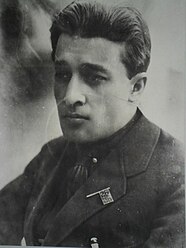
And Fayzulla Xoʻjayev was the founder of modern Uzbekistan. He first head of the Bukharan People's Soviet Republic, which would later form part of the Uzbek Soviet Socialist Republic. He became well known in the early 20th century as an advocate for Uzbekistani independence and as a leader of the Jadidist movement. This movement aimed to modernize and secularize Islamic society in Central Asia.
Khodzhayev's political career was marked by several challenges, including periods of exile and imprisonment. In 1920, he briefly served as the first prime minister of the Bukharan People's Soviet Republic. As Prime Minister, Khodjaev implemented a series of reforms aimed at promoting industrialization and collectivization in Uzbekistan. He also supported efforts to promote Uzbek culture and language, including the establishment of a national theater and the publication of a national encyclopedia. Khodjaev's political career came to an abrupt end in 1937, when he was arrested as part of Joseph Stalin's Great Purge. He was accused of espionage and treason and was executed in 1938. Today, Khodjaev is remembered as an important figure in the history of Uzbekistan and as a symbol of the complex relationship between the Central Asian republics and the Soviet Union. His legacy continues to be debated, with some seeing him as a progressive reformer and others as a Soviet stooge who contributed to the suppression of Uzbek national identity.
Vietnam
Kinh Dương Vương – Lạc Long Quân and the Hùng Kings were the founders of the Hồng Bàng dynasty – the first dynasty of Vietnam and laid the foundation to form the country of Vietnam.
Yemen
Yahya Muhammad Hamid ed-Din ruled as first independent King of Mutawakkilite Kingdom of Yemen from 1918 to 1948.
Europe
Albania

Ismail Kemal (24 January 1844 – 26 January 1919) was a distinguished leader of the Albanian national movement at the beginning of the 20th century, founder of the modern Albanian state in 1912, and its first prime minister and head of state and government.
Andorra
The first Co-Princes of Andorra were Roger-Bernard III, Count of Foix and Pere d'Urtx, Bishop of Urgell, who signed the Paréage, which gave them joint sovereignty over Andorra in 1278.
Austria
Karl Renner, who was the first Chancellor of Austria and the first post-war President of Austria after World War II, is often referred to as the "Father of the Republic" due to his leadership of the First Austrian Republic, and for playing a decisive role in establishing the present Second Austrian republic.
Belarus
- Kastuś Kalinoŭski was a revolutionary, publicist and poet, was one of the leaders of the failed January Uprising 1863 – 1864 on the territory of the former Grand Duchy of Lithuania on the territory of the Russian Empire.
- Janka Kupała was a Belarusian poet and writer of the early 20th century, a major writer and one of the founders of Belarusian national literature. Author of the slogan Žyvie Bielaruś!, which is still used today.
- Vaclaŭ Lastoŭski was a leading figure of the Belarusian independence movement in the early 20th century and the Prime Minister of the Belarusian Democratic Republic from 1919 to 1923
Belgium
Though there is no official founding father of Belgium, the leaders of the Belgian Revolution, Charles Rogier and Erasme Louis Surlet de Chokier, as well as the first King of the Belgians, Leopold I, were key figures in the independence of Belgium from the United Kingdom of the Netherlands.
Bosnia and Herzegovina
- Tvrtko I of Bosnia was the founder of the first Bosnian Kingdom.
- Husein-kapetan Gradaščević led the revolt against the Ottoman Sultan Mahmud II who fought for an autonomous Bosnian State.
Bulgaria
Mythical rulers of Bulgaria date back as far as 3rd millennium BC.
Medieval
- Avitohol (?–453? AD), who researchers claim to be the mythical Attila, is the first name in the Nominalia of the Bulgarian khans. He was from the Dulo clan and was succeeded by his son Ernak or Irnik (the second name mentioned in the Nominalia).
- Kubrat (606–665) was the founder of the powerful Great Bulgaria in 632 AD.
- Asparuh (around 640–701) is the most venerated national founder of Bulgaria. He was a son of Kubrat and started attacking and moving southwest of Old Great Bulgaria, towards the Lower Danube in Southeast Europe. Victorious over the Eastern Roman Empire, he established the First Bulgarian Empire in 680–681. Modern day Bulgaria is a direct successor of this state. Asparukh's brother Batbayan stayed ruling the core territories to the north, while Kotrag migrated further north and founded Volga Bulgaria.
- Krum the Fearsome (8th century – 814) – prominent ruler of the First Bulgarian Empire. During his reign the Bulgarian territory doubled in size, spreading from the middle Danube to the Dnieper and from Odrin to the Tatra Mountains. His able and energetic rule brought law and order to Bulgaria and developed the rudiments of state organization, thus he is regarded as an important national founder.
- Boris I (9th century-2 May 907) officially Christianized Bulgaria in 864, a significant event that shaped the History of Bulgaria and Europe. The historian Steven Runciman called him one of the greatest persons in history. His son and grandson, tsar Simeon I the Great and tsar Petar I, are also considered as having an important role in the formation and strengthening of the Bulgarian state and nationality.
- Samuil (997–1014) – energetic emperor (tsar) that restored Bulgarian might in Southeast Europe, and although the Empire was disestablished after his death, he is regarded as a heroic ruler in Bulgaria, as well as in North Macedonia.
- Ivan Asen I, Peter IV and Kaloyan are the three brothers tsars that reestablished Bulgaria after a major uprising (1185–1204).
- Euthymius of Tarnovo – Patriarch of Bulgaria between 1375 and 1393. Regarded as one of the most important figures of medieval Bulgaria, Euthymius was the last head of the Bulgarian Orthodox Church in the Second Bulgarian Empire. Arguably the best esteemed of all Bulgarian patriarchs, Euthymius was an authoritative figure in the Eastern Orthodox world of the time.
Modern
- Petar Bogdan (1601–1674)
- Paisius of Hilendar (1722–1773)
- Petar Beron (1799–1871))
- Georgi Rakovski (1821–1867)
- Dragan Tsankov (1828–1911)
- Lyuben Karavelov (1834–1879)
- Vasil Levski (1837–1873)
- Ekzarh Yosif (1840–1915)
- Vasil Drumev (1841–1901)
- Georgi Benkovski (1843–1876)
- Petko Karavelov (1943–1903)
- Hristo Botev (1848–1876)
- Zahari Stoyanov (1850–1889)
- Ivan Vazov (1850–1921)
- Stefan Stambolov (1851–1895)
Croatia
- Višeslav was one of the first dukes of Croatia, and the early attested by name.
- Tomislav is celebrated as the first king of Croatia and the founder of the first united Croatian state.
- Ante Starčević, has been referred to as Father of the Nation due to his campaign for the rights of Croats within Austria-Hungary and his propagation of a Croatian state in a time where many politicians sought unification with other South Slavs.
- Franjo Tuđman, first President of the Republic of Croatia 1990–99. Sometimes referred to as and self-proclaimed "Father of the Nation".
Cyprus
Makarios III (1913–1977), archbishop and primate of the autocephalous Eastern Orthodox Church of Cyprus (1950–1977), and first president of Cyprus (1960–1977), is widely regarded by Greek Cypriots as the Father of the Nation or "Ethnarch".
Conversely, Rauf Denktaş (1924–2012), under Makarios III second and last Vice President of Cyprus (1973–1974), and first President of Northern Cyprus (1983–2005), is considered the founding father of Northern Cyprus.
Czech Republic
- Czech, one of three mythical Slavic brothers who appear together in the Wielkopolska Chronicle, is considered the founder of the Czech nation.
- Bořivoj I, Duke of Bohemia, one of the first monarchs of the Duchy of Bohemia and the early attested by name.
- Wenceslaus I, Duke of Bohemia, main patron saint of the country. Anniversary of his murder on 28 September is celebrated as Statehood Day.
- Charles IV, Holy Roman Emperor, King of Bohemia, who is known under honorific title Father of the Homeland.
- František Palacký, politician and historian, influential in Czech National Revival movement, known by title Father of the Nation.
- Tomáš Masaryk, founder and first president of Czechoslovakia, which independence on 28 October 1918 is today celebrated as factical Independence Day.
- Václav Havel, founder of the Civic Forum party that played a major role in the Velvet Revolution that in 1989 toppled the Communist system in Czechoslovakia, was the last (and first democratically elected) president of Czechoslovakia from 1989 until the dissolution of Czechoslovakia in 1992, and the first president of the Czech Republic from 1993 to 2003.
Denmark
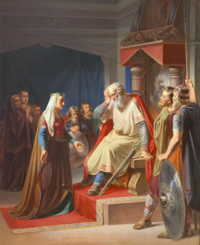

- Dan (king) (or Halfdan) is the name of the legendary earliest king of the Danes and Denmark, mentioned in medieval Scandinavian texts. He is said to be the progenitor of the nation and the Danish Royal House according to Saxo Grammaticus's Gesta Danorum.
- Gorm the Old, the first recorded ruler of Denmark, reigning from c. 936 to his death c. 958. The current King Frederik X of Denmark can trace his heritage back to Gorm the Old. He is called the founder of the kingdom of Denmark, though at the time he did not control the whole country, only Jutland.
- Harald Bluetooth was the son of Gorm the old and the first to unite Denmark into a single country by uniting the tribes. Harald ruled as king of Denmark from c. 958 – c. 986. He was baptized and the first Christian king of Denmark and helped Christianize the Danes, which is proclaimed on the Jelling stone.
- Niels Ebbesen was a Danish squire and national hero who liberated Denmark, which had been patented away to German barons and landlords. He is known for his killing of Gerhard III, Count of Holstein-Rendsburg in 1340, and in doing so returning control of Jutland and Funen back to the Danish king.
Estonia
Edgar Savisaar served as first post-Soviet Prime Minister of Estonia from 1991 to 1992.
Finland
Pehr Evind Svinhufvud served as first Prime Minister of Finland from 1917 to 1918.
France
- Vercingetorix: he united the Gauls in a revolt against Roman forces during the last phase of Julius Caesar's Gallic Wars.
- Clovis I: King of the Salian Franks (481–509), King of the Franks (509–511); united all the Frankish tribes in Gaul and gave them a common Catholic religion.
- Charlemagne: King of the Franks (768–814), Holy Roman Emperor (800–814), King of the Lombards (774–814); considered as a major founding figure of Europe.
- Napoleon I: First Consul of France (1799–1804), first President of the Italian Republic (1802–1805), King of Italy (1805–1814), Emperor of the French (1804–1814); founded the First French Empire and established many modern French institutions.
- Louis-Napoléon Bonaparte, later known as Emperor Napoleon III (1852–1870) was the first French President (1848–1852). He was the last Monarch of France.
- Charles de Gaulle is a hero of the French resistance to Germany during World War II, and the founder and first president (1959–1969) of the Fifth French Republic.
Georgia
- Pharnavaz I (329—237 BC), 1st monarch of the Kingdom of Iberia
- Bagrat III (960—1014), 1st monarch of the united Kingdom of Georgia
- Noe Ramishvili (1881—1930), 1st Prime Minister of the Democratic Republic of Georgia
- Zviad Gamsakhurdia (1939—1993), 1st President of Georgia
Germany
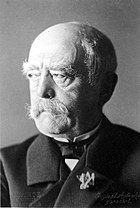
Before the national unification of Germany in 1871, German nationalists sought out multiple legendary founders of the German nation, such as Arminius, Charlemagne and – as championed by Friedrich Ludwig Jahn and Richard Wagner – Henry the Fowler. Otto von Bismarck (1815–1898), the "Iron Chancellor", engineered the unification of the numerous states of Germany in 1871.
Frederick Barbarossa has, from time to time, been cited as the father and hero of the German people. According to a Germanic medieval legend, Barbarossa was not dead but asleep, and would awaken in the hour of Germany's greatest need and restore the nation to its former glory. This idea gained prominence among German Nationalist movements in the 19th and 20th century. During the German Empire, Kaiser Wilhelm I was declared the reincarnation of Frederick. In 1937, Adolf Hitler praised Barbarossa as the emperor who first expressed Germanic cultural ideas and carried them to the outside world through his imperial mission; he would later name his invasion of the Soviet Union.
Modern, democratic Germany was decisively shaped by the "Fathers of the Basic Law" in the 1948 Constitutional Convention at Herrenchiemsee, and by the first German Chancellor, Konrad Adenauer. For reunified Germany, the slogan "Wir sind das Volk!" ("We are the people!") became symbolic, thus making all Germans founders of modern Germany.
Greece
Ancient
- Hellen, mythical progenitor of the Greeks, who gives his name to both the people and the country in the Greek language.
- Theseus, semi-legendary founder-hero of Athens
- Solon (594 BC) and Cleisthenes (508/7 BC), inventors of democracy and founders of the Athenian constitution.
- Lycurgus of Sparta, founder of the Spartan constitution
- Cadmus, founder and first King of Thebes.
Modern
- Adamantios Korais, Theophilos Kairis and other figures of the Greek Enlightenment who contributed to the country's national awakening leading up to its revolution against the Ottoman Empire
- Rigas Feraios, writer and revolutionary who is remembered as a national hero and the first victim of the uprising against the Ottomans.
- Theodoros Kolokotronis, Georgios Karaiskakis, Andreas Vokos Miaoulis, Laskarina Bouboulina, Yannis Makriyannis and other military leaders of the Greek War of Independence
- Alexandros Mavrokordatos, President of the First National Assembly at Epidaurus, co-author of the Greek Declaration of Independence and first Provisional Constitution and first head of government (President of the Executive) of Modern Greece.
- Ioannis Kapodistrias, first head of state of independent Greece (1827–1831) and founder of the modern Greek state
- Eleftherios Venizelos, eight-time Prime Minister of Greece, has been labelled as "The Maker of Modern Greece" and is still widely known as the "Ethnarch".
Hungary
According to Anonymus the fejedelem who made the Hungarians settle into the Carpathian Basin in 896 AD was Árpád, who was said to have descended from Prince Csaba, the forefather of the nation. He was elected nagyfejedelem (grand prince), and created a coherent Hungarian state in and around the Pannonian Basin and mingled with the inhabitants. His dynasty reigned over the Hungarian Kingdom from the ninth century until 1301. In Hungary Stephen I of Hungary is commonly regarded as the founder of the nation. He was Hungary's first king and united the Magyar people into the Kingdom of Hungary.Coloman the Learned first entered into a personal union with Croatia, bringing prosperity to the nations. Post-arpadian king Louis the Great established Hungary as a European power, and is remembered as a "knightking" for his military excellence. Among others, his military achievements include being the first European monarch to defeat a Ottoman imperial army in battle. The Habsburg era also gave rise to many great figures, such as Lajos Kossuth the Pater Patriae of Hungary. He is known as the leader of the Hungarian Revolution of 1848 against the Habsburgs, being the creator of the April Laws (and an unenacted constitution) and helping in the establishment of the Hungarian State and therefore being founder of modern Hungary. An equally important figure is Ferenc Deák, one of the initiators of the Compromise, whose efforts led to the reunification of the Lands of the Holy Crown in 1868. Hungarian prime minister Mihály Károlyi would later be the one to officially dissolve the Austro-Hungarian Empire, creating a free Hungarian republic.
Iceland
Jón Sigurðsson was the leader of the 19th century Icelandic independence movement. He was the first president of the Althingi, restored as a legislative branch in 1875.
Ireland
The Irish Free State was established after the Irish War of Independence (1919–21), in which Éamon de Valera, Cathal Brugha and Michael Collins were key leaders. However, they became antagonists in the Irish Civil War (1922–23), in which Collins and Brugha were killed and de Valera defeated. For decades, the inheritors of the opposing factions bypassed these sensitivities to honour the earlier leaders of the Easter Rising of 1916, in particular the seven signatories of the Proclamation of the Irish Republic: Patrick Pearse, James Connolly, Éamonn Ceannt, Tom Clarke, Seán Mac Diarmada, Thomas MacDonagh, and Joseph Plunkett.
Italy
Ancient

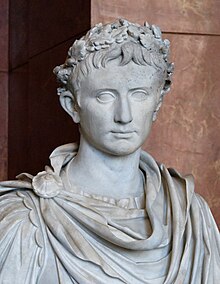

- Romulus, was the legendary founder and first king of Rome, the capital of Italy. Roman myth held that their city was founded by Romulus, son of the war god Mars and the Vestal virgin Rhea Silvia, fallen princess of Alba Longa and descendant of Aeneas of Troy. Exposed on the Tiber river, Romulus and his twin Remus were suckled by a she-wolf at the Lupercal before being raised by the shepherd Faustulus, taking revenge on their usurping great-uncle Amulius, and restoring Alba Longa to their grandfather Numitor. The brothers then decided to establish a new town but quarrelled over some details, ending with Remus's murder and the establishment of Rome on the Palatine Hill.
- Julius Caesar was a Roman general and statesman. A member of the First Triumvirate, Caesar led the Roman armies in the Gallic Wars before defeating his political rival Pompey in a civil war, and subsequently became dictator from 49 BC until his assassination in 44 BC. He played a critical role in the events that led to the demise of the Roman Republic and the rise of the Roman Empire. After assuming control of government, Caesar began a program of social and governmental reforms, including the creation of the Julian calendar. He gave citizenship to many residents of far regions of the Roman Republic. He initiated land reform and support for veterans.
- Scipio Africanus – he was a Roman general and statesman, most notable as one of the main architects of Rome's victory against Carthage in the Second Punic War. Often regarded as one of the best military commanders and strategists of all time, his greatest military achievement was the defeat of Hannibal at the Battle of Zama in 202 BC. This victory in Africa earned him the epithet Africanus, literally meaning "the African," but meant to be understood as a conqueror of Africa. Scipio Africanus is mentioned in Il Canto degli Italiani, the national anthem of Italy since 1946.
- Augustus was the founder of the Roman Empire. He reigned as the first Roman emperor from 27 BC until his death in AD 14. The reign of Augustus initiated an imperial cult, as well as an era of imperial peace (the Pax Romana or Pax Augusta) in which the Roman world was largely free of armed conflict. The Principate system of government was established during his reign and lasted until the Crisis of the Third Century. Augustus dramatically enlarged the empire, annexing Egypt, Dalmatia, Pannonia, Noricum, and Raetia, expanding possessions in Africa, and completing the conquest of Hispania, but he suffered a major setback in Germania. Beyond the frontiers, he secured the empire with a buffer region of client states and made peace with the Parthian Empire through diplomacy. He reformed the Roman system of taxation, developed networks of roads with an official courier system, established a standing army, established the Praetorian Guard as well as official police and fire-fighting services for Rome, and rebuilt much of the city during his reign. Augustus created during the Roman Empire for the first time an administrative region called Italia with inhabitants called Italicus Populus; for this reason historians called him Father of Italians.
- Constantine the Great was a Roman emperor from AD 306 to 337 and the first Roman emperor to convert to Christianity. He played a pivotal role in elevating the status of Christianity in Rome, decriminalizing Christian practice and ceasing Christian persecution in a period referred to as the Constantinian shift. This initiated the cessation of the established ancient Roman religion. Constantine is also the originator of the religiopolitical ideology known as Constantinianism, which epitomizes the unity of church and state, as opposed to separation of church and state. He founded the city of Constantinople and made it the capital of the Empire, which remained so for over a millennium.
Medieval

- Alberto da Giussano is a legendary character of the 12th century who would have participated, as a protagonist, in the battle of Legnano on 29 May 1176. In reality, according to historians, the actual military leader of the Lombard League in the famous military battle with Frederick Barbarossa was Guido da Landriano. Historical analyses made over time have indeed shown that the figure of Alberto da Giussano never existed. In the past, historians, attempting to find a real confirmation, hypothesized the identification of his figure with Albertus de Carathe (Alberto da Carate) and Albertus Longus (Alberto Longo), both among the Milanese who signed the pact in Cremona in March 1167 which established the Lombard League, or in an Alberto da Giussano mentioned in an appeal of 1196 presented to Pope Celestine III on the administration of the church-hospital of San Sempliciano. These, however, are all weak identifications, given that they lack clear and convincing historical confirmation. The battle of Legnano ended the fifth and last descent into Italy of Emperor Frederick Barbarossa, who after the defeat tried to resolve the Italian question by adopting a diplomatic approach. This resulted a few years later in the Peace of Constance (25 June 1183), with which the Emperor recognized the Lombard League and made administrative, political, and judicial concessions to the municipalities, officially ending his attempt to dominate northern Italy. The battle is alluded to in the Canto degli Italiani by Goffredo Mameli and Michele Novaro, the national anthem of Italy since 1946, which reads: «From the Alps to Sicily, Legnano is everywhere» in memory of the victory of Italian populations over foreign ones.
- Cola di Rienzo, led a revolt in Rome, became the Tribune and later attempted to unify Italy. In July 1347, in a decree, he proclaimed the sovereignty of the Roman people over the empire. But before this he had set to work on restoring the authority of Rome over the cities and provinces of Italy, of making the city again caput mundi. He wrote letters to the cities of Italy, asking them to send representatives to an assembly which would meet on 1 August, when the formation of a great federation under the headship of Rome would be considered. On the appointed day, a number of representatives appeared, and Cola issued an edict citing Louis IV, Holy Roman Emperor and his rival Charles IV, Holy Roman Emperor, and also the imperial electors and all others concerned in the dispute, to appear before him in order that he might pronounce judgment.The following day, the festival of the unity of Italy was celebrated, but neither this nor the previous meeting had any practical result. Cola's power, however, was recognized in the Kingdom of Naples, and both Joan I of Naples and Louis I of Hungary appealed to him for protection and aid, and on 15 August with great pomp he was crowned Tribune. Ferdinand Gregorovius says this ceremony "was the fantastic caricature in which ended the imperium of Charles the Great. A world where political action was represented in such guise was ripe for overthrow, or could only be saved by a great mental reformation."
Modern

 Giuseppe Mazzini (left), highly influential leader of the Italian revolutionary movement; and Giuseppe Garibaldi (right), celebrated as one of the greatest generals of modern times and as the "Hero of the Two Worlds" because of his military enterprises in South America and Europe, who fought in many military campaigns that led to Italian unification
Giuseppe Mazzini (left), highly influential leader of the Italian revolutionary movement; and Giuseppe Garibaldi (right), celebrated as one of the greatest generals of modern times and as the "Hero of the Two Worlds" because of his military enterprises in South America and Europe, who fought in many military campaigns that led to Italian unification

 Victor Emmanuel II (left) and Camillo Benso, Count of Cavour (right), leading figures in unification, became respectively the first King and Prime Minister of unified Italy.
Victor Emmanuel II (left) and Camillo Benso, Count of Cavour (right), leading figures in unification, became respectively the first King and Prime Minister of unified Italy.

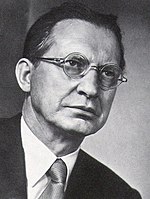
- Napoleon Bonaparte was the first to use the title of President of the Italian Republic. Born on the island of Corsica to a family of Italian origin, Napoleon Bonaparte was a French military officer and statesman who rose to prominence during the French Revolution and led a series of successful campaigns across Europe during the French Revolutionary and Napoleonic Wars from 1796 to 1815. He was the leader of the French Republic as First Consul from 1799 to 1804, then of the French Empire as Emperor of the French from 1804 to 1814, and briefly again in 1815. The Napoleonic Italian Republic was a short-lived (1802–1805) republic located in Northern Italy. Its capital was Milan and it consisted of the same areas that had comprised the Cisalpine Republic, primarily Lombardy and Romagna. In 1805, following Bonaparte's assumption of the title of Emperor of the French, the Italian Republic was transformed into the Kingdom of Italy (Regno d'Italia), with Napoleon as king and his stepson Eugène de Beauharnais as viceroy. The modern presidential standard of Italy standard recalls the colors of the flag of Italy, with particular reference to the standard of the historic Napoleonic Italian Republic.
- King Victor Emmanuel II, Giuseppe Garibaldi, Prime Minister Camillo Benso, Count of Cavour, and Giuseppe Mazzini have been referred to as the "Four Fathers of the Fatherland" for their contribution to Italian unification. Italy was unified in 1861 and Rome became its capital in 1870.
- Victor Emmanuel II was King of Sardinia (also known as Piedmont-Sardinia) from 23 March 1849 until 17 March 1861, when he assumed the title of King of Italy and became the first king of an independent, united Italy since the 6th century, a title he held until his death in 1878. Borrowing from the old Latin title Pater Patriae of the Roman emperors, the Italians gave him the epithet of Father of the Fatherland (Italian: Padre della Patria). The Italian national Victor Emmanuel II Monument in Rome, containing the Altare della Patria, was built in his honour.
- Giuseppe Garibaldi was a general, patriot, revolutionary and republican. He contributed to Italian unification (Risorgimento) and the creation of the Kingdom of Italy. Garibaldi is also known as the "Hero of the Two Worlds" because of his military enterprises in South America and Europe. It is celebrated as one of the greatest generals of modern times and fought in many military campaigns that led to Italian unification.
- Camillo Benso, Count of Cavour was a politician, statesman, businessman, economist, and noble, and a leading figure in the movement towards Italian unification. Cavour put forth several economic reforms in his native region of Piedmont, at that time part of the Kingdom of Sardinia, in his earlier years and founded the political newspaper Il Risorgimento. After being elected to the Chamber of Deputies, he quickly rose in rank through the Piedmontese government, coming to dominate the Chamber of Deputies through a union of centre-left and centre-right politicians. After a large rail system expansion program, Cavour became prime minister in 1852. As prime minister, Cavour successfully negotiated Piedmont's way through the Crimean War, the Second Italian War of Independence, and Garibaldi's Expedition of the Thousand, managing to manoeuvre Piedmont diplomatically to become a new great power in Europe, controlling a nearly united Italy that was five times as large as Piedmont had been before he came to power.
- Giuseppe Mazzini was a politician, journalist, and activist for the unification of Italy (Risorgimento) and spearhead of the Italian revolutionary movement. His efforts helped bring about the independent and unified Italy in place of the several separate states, many dominated by foreign powers, that existed until the 19th century. An Italian nationalist in the historical radical tradition and a proponent of a republicanism of social-democratic inspiration, Mazzini helped define the modern European movement for popular democracy in a republican state. Mazzini's thoughts had a very considerable influence on the Italian and European republican movements, in the Constitution of Italy, about Europeanism and more nuanced on many politicians of a later period, among them American president Woodrow Wilson, British prime minister David Lloyd George, Mahatma Gandhi, Indian prime minister Jawaharlal Nehru, Indian independence activist Vinayak Damodar Savarkar, and Israeli prime minister Golda Meir.
- Vittorio Emanuele Orlando was an statesman, who served as the prime minister of Italy from October 1917 to June 1919. Orlando is best known for representing Italy in the 1919 Paris Peace Conference with his foreign minister Sidney Sonnino. He was also known as "Premier of Victory" for defeating the Central Powers along with the Entente in World War I. Italy entered into World War I in 1915 with the aim of completing national unity: for this reason, it is also considered the Fourth Italian War of Independence, in a historiographical perspective that identifies in the latter the conclusion of the unification of Italy, whose military actions began during the revolutions of 1848 with the First Italian War of Independence. He was also the provisional president of the Chamber of Deputies between 1943 and 1945, and a member of the Constituent Assembly that changed the Italian form of government into a republic. Aside from his prominent political role, Orlando was a professor of law and is known for his writings on legal and judicial issues, which number over a hundred works.
- The anti-fascist members of the Constituent Assembly of Italy are considered the "fathers" of the modern Italian Republic, which replaced the Monarchy after a referendum in 1946. The assembly was formed by the representatives of all the forces that contributed to the defeat of Nazi and Fascist forces during the liberation of Italy. After WWII the Italian society was divided, and the economy all but destroyed—per capita income in 1944 was at its lowest point since 1900. The aftermath left Italy angry with the monarchy for its endorsement of the Fascist regime, contributing to a revival of Italian republicanism. Prominent members among them included the christian democratic Alcide De Gasperi (also counted among the founding fathers of the European Union), the communist Palmiro Togliatti, the social democratic Giuseppe Saragat, the liberal Enrico De Nicola (he later became the first president of Italy), the republican Cipriano Facchinetti and the liberal Vittorio Emanuele Orlando (the "premier of victory" in WWI).. De Gasperi was the last prime minister of the Kingdom of Italy, serving under both Victor Emmanuel III and Umberto II. He was also the first prime minister of the Italian Republic, and also briefly served as provisional head of state after the Italian people voted to end the monarchy and establish a republic.
Kosovo
It is likely that the Kosovo Albanians regard Ibrahim Rugova as a key figure, since he was the one that brought an independence movement of Kosovo from the fall of Yugoslavia. Additionally, Rugova ruled Kosovo from the 1992 till 2006 as president of the nation, and ever since has been regarded as the National Hero of Kosovo, and led to further independence in 2008 from Serbia to which now 97 nations have recognised Kosovo as of September 2021.
Latvia
Most Latvians regard Kārlis Ulmanis, a key figure in the Latvian war of independence and four-times Prime Minister of Latvia, as being the founding father of modern Latvia.
Liechtenstein
- Karl I became the first Prince of Liechtenstein in 1608.
- Hans-Adam I purchased the domain of Schellenberg and the county of Vaduz which would eventually form the modern day Lichtenstein.
- Johann I drafted the first constitution of Lichtenstein, in 1818.
Lithuania
The first and the only king (1251–1263) of Lithuania, Mindaugas, is seen as the founder of the Lithuanian state, as is commemorated on Statehood Day on 6 July. Dr. Jonas Basanavičius, activist and proponent of the Lithuanian National Revival in the turn of the 19th century into the 20th, who participated in every major event leading to the independence of Lithuania, member of the Council of Lithuania which on 16 February 1918 declared Lithuania an independent state, is universally considered the "Patriarch of the Nation".
Luxembourg
Sigfried, Count of the Ardennes
Malta
Anthony Mamo (1909–2008) was the first president of the Republic of Malta.
Moldova
Monaco
- François Grimaldi became the first Lord of Monaco when he captured the Rock of Monaco in 1297.
- Honoré II, Prince of Monaco secured recognition of independent sovereignty from Spain in 1633, and then from France by signing the Treaty of Péronne in 1641.
Montenegro
Petar I Petrović-Njegoš (1747–1830) acquired de facto independence for Montenegro from the Ottoman Empire and created the first Montenegrin law in the modern era.
Netherlands
Prince William I of Orange (1533–1584) or William the Silent, is known as the father of the Netherlands. He led the Dutch in their Revolt against Spain for their independence. Today he is often called Vader des Vaderlands ("Father of the Fatherland").
North Macedonia
Kiro Gligorov (first president of independent Macedonia).
Norway
- King Harald Fairhair, who unified Norway and ruled c. 872–930, is often considered the founder of the nation.
- Usually the Norwegian Constituent Assembly at Eidsvoll in 1814, consisting of 112 men from most of the country, in Norway often referred to as Eidsvoll Men or the Fathers of the Constitution.
Poland

| This section does not cite any sources. Please help improve this section by adding citations to reliable sources. Unsourced material may be challenged and removed. (June 2020) (Learn how and when to remove this message) |
Legendary:
- Lech, legendary first leader of Polans tribe.
Kingdom of Poland and Rzeczpospolita Obojga Narodów:
- Mieszko I (c. 920/45–992), the first historical ruler of Poland, Mieszko I is considered the de facto creator of the Polish state. He was a Duke of the Polans from about 960 until his death. Mieszko I's marriage in 965 to the Přemyslid princess Dobrawa and his baptism in 966 put him and his country in the cultural sphere of Western Christianity. According to existing sources, Mieszko I was a wise politician, a talented military leader and charismatic ruler. He successfully used diplomacy, concluding an alliance with Bohemia first, and then with Sweden and the Holy Roman Empire. In foreign policy, he placed the interests of his country foremost, even entering into agreements with former enemies. On his death, he left to his sons a country of greatly expanded territory, with a well-established position in Europe. Mieszko I also appeared as "Dagome" in a papal document from about 1085, called "Dagome iudex", which mentions a gift or dedication of Mieszko's land to the Pope (the act took place almost a hundred years earlier).
- Bolesław I Chrobry (967–1025), was Duke of Poland from 992 to 1025, and the first King of Poland in 1025. He was the son of Mieszko I of Poland by his wife, Dobrawa of Bohemia. He supported the missionary views of Adalbert, Bishop of Prague, and Bruno of Querfurt. The martyrdom of Adalbert in 997 and his imminent canonization were used to consolidate Poland's autonomy from the Holy Roman Empire. This perhaps happened most clearly during the Congress of Gniezno (11 March 1000), which resulted in the establishment of a Polish church structure with a Metropolitan See at Gniezno. This See was independent of the German Archbishopric of Magdeburg, which had tried to claim jurisdiction over the Polish church. Following the Congress of Gniezno, bishoprics were also established in Kraków, Wrocław and Kołobrzeg, and Bolesław formally repudiated paying tribute to the Holy Roman Empire. In the summer of 1018, in one of his expeditions, Bolesław I captured Kiev, where he installed his son-in-law Sviatopolk I as ruler. According to legend, Bolesław chipped his sword when striking Kiev's Golden Gate. Later, in honor of this legend, a sword called Szczerbiec ("Jagged Sword") would become the coronation sword of Poland's kings. Bolesław I was a remarkable politician, strategist, and statesman. He not only turned Poland into a country comparable to older western monarchies, but he raised it to the front rank of European states. Bolesław conducted successful military campaigns in the west, south and east. He consolidated Polish lands and conquered territories outside the borders of modern-day Poland, including Slovakia, Moravia, Red Ruthenia, Meissen, Lusatia, and Bohemia. He was a powerful mediator in Central European affairs. Finally, as the culmination of his reign, in 1025 he had himself crowned King of Poland. He was the first Polish ruler to receive the title of rex (Latin: "king").
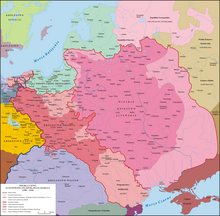
- Władysław II Jagiełło (c. 1352/1362 – 1434) was the Grand Duke of Lithuania (1377–1434) and then the King of Poland (1386–1434), first alongside his wife Jadwiga until 1399, and then sole King of Poland. He ruled in Lithuania from 1377. Born a pagan, in 1386 he converted to Catholicism and was baptized as Władysław in Kraków, married the young Queen Jadwiga, and was crowned King of Poland as Władysław II Jagiełło. In 1387 he converted Lithuania to Christianity. His own reign in Poland started in 1399, upon the death of Queen Jadwiga, and lasted a further thirty-five years and laid the foundation for the centuries-long Polish–Lithuanian union. The dynasty ruled both states until 1572, and became one of the most influential dynasties in late medieval and early modern Central and Eastern Europe. During his reign, the Polish-Lithuanian state was the largest state in the Christian world. The reign of Władysław II Jagiełło extended Polish frontiers and is often considered the beginning of Poland's Golden Age.
- Zygmunt II August (1520–1572), was the King of Poland and Grand Duke of Lithuania, the only son of Sigismund I the Old, whom Sigismund II succeeded in 1548. In 1569 he oversaw the signing of the Union of Lublin between Poland and the Grand Duchy of Lithuania, which formed the Polish–Lithuanian Commonwealth and introduced an elective monarchy.
- Tadeusz Kościuszko (1746–1817) was a Polish-Lithuanian military engineer, statesman, and military leader who became a national hero in Poland, Lithuania, Belarus, and the United States. He fought in the Polish–Lithuanian Commonwealth's struggles against Russia and Prussia, and on the U.S. side in the American Revolutionary War. As Supreme Commander of the Polish National Armed Forces, he led the 1794 Kościuszko Uprising.
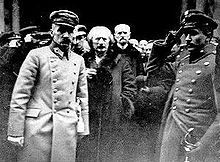
Fathers of Polish Independence:
- Józef Piłsudski (1867–1935), was a Polish statesman who served as the Chief of State (1918–22) and First Marshal of Poland (from 1920). From World War I he had great power in Polish politics and was a distinguished figure on the international scene. He is viewed as a father of the Druga Rzeczpospolita Polska re-established in 1918, 123 years after the 1795 Partitions of Poland by Austria, Prussia and Russia.
- Roman Dmowski (1864–1939), was a Polish politician, statesman, polyglot, and the leader of National Democracy movement. He was represented Poland at the Paris Peace Conference in 1919.
- Ignacy Jan Paderewski (1860–1941), was a Polish pianist and composer, freemason, politician, statesman and spokesman for Polish independence. He was a favorite of concert audiences around the world. His musical fame opened access to diplomacy and the media. Paderewski played an important role in meeting with President Woodrow Wilson and obtaining the explicit inclusion of independent Poland as point 13 in Wilson's peace terms in 1918, called the Fourteen Points. He was the Prime Minister of Poland and also Poland's foreign minister in 1919, and represented Poland at the Paris Peace Conference in 1919.
- Wojciech Korfanty (1873–1939), was a Polish activist, journalist and politician, who served as a member of the German parliaments, the Reichstag and the Prussian Landtag, and later, in the Polish Sejm. Briefly, he also was a paramilitary leader, known for organizing the Polish Silesian Uprisings in Upper Silesia, which after World War I was contested by Germany and Poland. Korfanty fought to protect Poles from discrimination and the policies of Germanisation in Upper Silesia before the war and sought to join Silesia to Poland after Poland regained its independence.
- Wincenty Witos (1874–1945), was a Polish politic and the leader of the Polish Peasants' Movement. Witos was also a leader of Polish Liquidation Committee, formed in Kraków in 1918.
- Ignacy Daszyński (1866–1936), was a Polish socialist politician, journalist, and Prime Minister of the Provisional People's Government of the Republic of Poland, formed in Lublin in 1918.
- Józef Haller von Hallenburg (1873–1960) was a lieutenant general of the Polish Army, a legionary in the Polish Legions, harcmistrz (the highest Scouting instructor rank in Poland), the president of the Polish Scouting and Guiding Association (ZHP), and a political and social activist. After the Peace of Brest-Litovsk he arrived in France in July 1918, where on behalf of the Polish National Committee he created what was known as the Blue Army (from the color of its French uniforms, also known as Haller's Army). For the next few months his army, allied to the Entente, would fight against Germany.
Portugal
- Viriathus was the most important leader of the Lusitanian people that resisted Roman expansion into western Hispania or Iberia (as the Greeks called it). Today Viriathus is regarded as a national hero and an enduring symbol of Portuguese nationality and independence, portrayed by artists and celebrated by its people throughout the centuries.
- Henry of Burgundy (1066–1112), was appointed Count of Portugal as a reward for military services to Kingdom of León, and with the purpose of expanding the territory southwards. And, more importantly, his son, Count Afonso I of Portugal (1109–1185), a Templar Brother who took control of the county after Henry died and was recognized by the Holy See, in 1179, as the first King of Portugal, through the Manifestis Probatum bull.
Romania
- Burebista is considered the great king who unified all the Dacian tribes. He is also known for creating a powerful empire that stretched from west to the Adriatic Sea and Southern Germany, from east to the Black Sea, from north to Southern Poland and from south to Greek Macedonia and Eastern Thrace. He is considered by many Romanians as a national hero. The Dacian Kingdom under Burebista was the greatest territorial extent in Romania's history.
- Decebalus and Trajan are considered to be the fathers of the Romanian people, as Roman veterans were settled on the present-day territory of Romania following Trajan's Dacian Wars.
- Basarab I the Founder (c. 1270-1351/1352) was the great voivode of Wallachia. Basarab either came into power between 1304 and 1324 by dethroning or peacefully succeeding the legendary founder of Wallachia, Radu Negru, or in 1310 by succeeding his father, Thocomerius. In 1330 he defeated Charles I of Hungary at the battle of Posada, and the first independent Romanian state was consequently founded. He founded the Basarab dynasty and his descendants ruled Wallachia for more than three centuries. From the middle of the 14th century, some foreign chronicles used derivations of his name: "Basarab", when referring to Wallachia.
- Michael the Brave (1558–1601) was the Prince of Wallachia (1593–1601), Prince of Moldavia (1600) and de facto ruler of Transylvania (1599–1600). He is considered one of Romania's greatest national heroes. Since the 19th century, Michael the Brave has been regarded as a symbol of the unity of all Romanians, as his reign marked the first time all states mainly inhabited by Romanians were under the same ruler.
- Alexandru Ioan Cuza was elected as the first leader of the modern Romanian state. He presided over Wallachia and Moldavia in a personal union, which later became permanent even though he was forced to abdicate.
- Carol I was the first King of Romania that obtained the independence of the country.
- Ion C. Brătianu established the foundation of the modern Romanian State.
- Mihail Kogălniceanu established the foundation of the modern Romanian State.
- Ferdinand I was King of Romania when the country gained Transylvania and Bessarabia.
Russia
- Rurik, a Varangian prince and the legendary founder of the royal Rurikid dynasty, established the first Russian state in Novgorod the Great in 862.
- Ivan IV, known as Ivan the Terrible, Grand Prince of Moscow from the Rurikid dynasty, established the Tsardom of Muscovy and was proclaimed the first Tsar of Russia in 1547.
- Mikhail I of Russia was the first Tsar of Russia from the House of Romanov, elected to the throne by the Zemsky Sobor in 1613. His elevation marked the end of the period of political and civil strife known as the Time of Troubles.
- Peter the Great, Tsar and then Emperor of Russia from the House of Romanov, founded Saint Petersburg in 1703 and established the Russian Empire in 1721, inaugurating the imperial period of Russian history that lasted until the February Revolution of 1917.
- Vladimir Lenin was the founder of Soviet Russia and later, the Soviet Union
- Boris Yeltsin was the first president of the Russian Federation as an independent state. He was first elected to the presidency in June 1991, while the Russian Federation was still a part of the USSR, and re-elected in 1996.
San Marino
Saint Marinus was the founder of the world's oldest surviving republic, San Marino, in 301. Tradition holds that he was a stonemason by trade who came from the island of Rab on the other side of the Adriatic Sea (modern Croatia), fleeing persecution for his Christian beliefs in the Diocletianic Persecution.
Serbia
- Stefan Nemanja, grand prince of the medieval Serbian Grand Principality that would eventually evolve into the Serbian Kingdom and Serbian Empire. He is the founder of the Nemanjić dynasty.
- Karađorđe, revolutionary who led the struggle for Serbia's liberation and independence from the Ottoman Empire during the First Serbian Uprising. He is the founder of the Karađorđević dynasty and bears the honorific title Father of the Nation.
- Miloš Obrenović, a revolutionary who led the struggle for Serbia's liberation and independence from the Ottoman Empire during the Second Serbian Uprising. He is the founder of the Obrenović dynasty and bears the honorific title Father of the Nation.
Slovakia
Many Slovaks see Great Moravia as their ancestors, which would make Mojmír I a founder.
Slovenia
France Bučar is a Slovenian politician, legal expert and author. Between 1990 and 1992, he served as the first chairman of the freely elected Slovenian Parliament. He was the one to formally declare the independence of Slovenia on 25 June 1991. He is considered one of the founders of Slovenian democracy and independence. He is also considered, together with Peter Jambrek, as the main author of the current Slovenian constitution. Jože Pučnik was president of DEMOS and one of the main persons in the Slovenian fight for independence. The largest Slovenian airport is named Letališče Jožeta Pučnika (Jože Pučnik airport). Lojze Peterle was first prime minister of Slovenia and Milan Kučan was the first president. Janez Janša was the first minister of defense, and played a big role in the development of Slovenian Territorial Defence, together with Janez Slapar who was the first chief of staff. The first Minister of Interior was Igor Bavčar, who helped the Slovenian Territorial Defense defeat the Yugoslav Army with the police.
Spain

The Catholic Monarchs, Isabella of Castile and Ferdinand II of Aragon, unified Spain in the 15th century. Both came from the noble House of Trastámara. Charles V, Holy Roman Emperor was the first to inherit the dynastic union and the first Habsburg monarch. His successor, Philip II of Spain, established a capital in Madrid. The first Bourbon King of Spain was Philip V of Spain, who is also responsible for the de jure unification of the country.
Sweden
While Sweden had existed as a monarchy of sorts long before his time, Birger Jarl, father of and regent for Valdemar, King of Sweden, can be said to have established Sweden as a nation. Birger was Jarl in the years 1248–66.
Gustav I of Sweden, who secured Sweden's independence from Denmark in 1523, is often considered a father of the nation.
Switzerland
Both the anonymous Eidgenossen who drew up the Federal Charter of 1291, or the liberal statesmen who helped found the modern Swiss Confederation in 1848 can be considered the founders of Switzerland. Among the latter, those who became the first members of the Swiss Federal Council were perhaps the most notable: Ulrich Ochsenbein, Jakob Stämpfli, Jonas Furrer, Josef Munzinger, Henri Druey, Friedrich Frey-Herosé, Wilhelm Matthias Naeff and Stefano Franscini.
Ukraine
In 1648, Bohdan Khmelnytsky and Petro Doroshenko led the largest of the Cossack uprisings against the Commonwealth and the Polish king.
Mykhailo Hrushevsky was the President the Central Council of Ukraine People's Republic.
Leonid Kravchuk is the First President of Ukraine elected in 1991.
United Kingdom
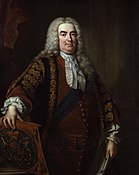
Alfred the Great is generally considered the first King of England, while the modern English polity is often considered founded by William the Conqueror, William I of England following the Norman Conquest, and from which the present Royal Family continue to assert descent. The first Monarch to unite all of Scotland was Kenneth MacAlpin in 843. Ireland was brought under Norman English dominion in 1189 under Henry II of England, Wales was subdued between 1093 and 1293; before this Brian Boru in Ireland and Owain the Great in Wales had been figures of national importance in the context of fragmented polities. Scotland and England had a centuries long history of invasion and counter invasion, and the Scottish national heroes William Wallace and Robert the Bruce, as well as the Declaration of Arbroath, asserting Scottish nationhood and sovereignty, date from that period.
Scotland and England were finally united dynastically rather than militarily, and James VI and I was regarded by some as the first king of Great Britain (both England and Scotland). The sovereign United Kingdom of Great Britain, however, dates from the Acts of Union 1707, under Queen Anne, while the United Kingdom of Great Britain and Ireland, later Northern Ireland, was created in 1801 by a further Act of Union - up to that point Great Britain and Ireland were de jure two separate kingdoms in personal Union. Robert Walpole is generally considered the first Prime Minister of the United Kingdom.
Following Irish independence, the Northern Ireland Parliament operated largely autonomously from London, with the leaders Edward Carson and Sir James Craig, Lord Craigavon, considered by unionists to be its founding fathers. The reinstallment of the Scottish Parliament as a devolved institution in 1999 under the influence of Donald Dewar led to his recognition as the "Father of Scottish devolution" and "Father of the Nation".
Vatican City
Peter the Apostle is seen as the first pope.
Vatican City took on its modern form under the Lateran Treaty signed by Pope Pius XI.
Oceania
Australia
Early colonial era
- Captain Arthur Phillip was the first Governor of New South Wales and founder of the first British colony in Australia.
- Governor Lachlan Macquarie is considered by historians to have had a crucial influence on the transition of New South Wales from a penal colony to a free settlement and therefore to have played a major role in the shaping of Australian society in the early nineteenth century.
- William Wentworth advocated for the rights of emancipists and for representative self-government; he led the drafting of New South Wales' first self-governing constitution establishing the Parliament of New South Wales, Australia's first parliament. He was among the first colonists to promote a nascent form of Australian nationalism.
Late colonial and federation era

- Sir Henry Parkes is often regarded as the "Father of Federation" in Australia. During the late 19th century, he was the strongest proponent for a federation of Australian territories. However, he died before Australia federated, and was never able to see his plan come to fruition.
- Andrew Inglis Clark is another founding father of Australia. He largely wrote the Australian Constitution in addition to developing the Hare-Clark system of voting and pushing for universal adult suffrage and other progressive ideals that would become law early in Australia's history.
- Alfred Deakin also stands out as a significant founding father as he attended all the Federation Conferences, he gave up 10 years of senior political appointments to travel the country promoting federation and was Australia's first Attorney General. He was instrumental in securing Edmond Barton as the first Prime Minister while Deakin went on to be Australia's 2nd, 5th and 7th Prime Minister. Deakin was responsible for establishing the High Court, Australian Navy, and many other important acts of parliament. Sir Robert Menzies is on record for saying he was Australia's greatest Prime Ministers.
- John Dunmore Lang. Although passing away over two decades before federation, John Dunmore Lang was a strong advocate of a federation of the Australian colonies as a democratic republic, independent from the British Empire.
Federated States of Micronesia
Chief Justice Andon Amaraich is regarded as "one of the founding fathers of the Federated States of Micronesia".
Fiji
Ratu Sir Kamisese Mara is widely viewed as the "Founding Father" of an independent Fiji.
Nauru
Hammer DeRoburt dominated the political scene for the first two decades of the republic; he served as president for most of the postindependence period until being voted out of office in 1989. Thereafter, national politics was marked by a series of weak, short-lived governments; the presidency tended to be traded among a small number of politicians.
New Zealand
By tradition, the first Polynesian migration to New Zealand left from Hawaiki in the 10th century in a Great Fleet of ocean going canoes, led by Kupe who is considered by many to be the founding figure of New Zealand. The 1840 Treaty of Waitangi between Maori people and the British Crown is considered by many to be the founding document of New Zealand, despite its not having any legal status.
Papua New Guinea
Grand Chief Sir Michael Somare is viewed as the "Founding Father" of Papua New Guinea. The leading figure during the country's transition to independence from Australia, he was Papua New Guinea's first Prime Minister.
Tonga

King George Tupou I, who united his country and established the contemporary Kingdom of Tonga, has been described as Tonga's "founding father".
Former states and other territories
Arabian Peninsula
After the Hijrah (622), the Islamic Prophet Muhammad (570–632) assumed political leadership over Yathrib, present day Medina. This feat in and of itself was unheard of, as the city consisted of both Jews and Arab pagans. Alongside consolidating his power in Medina, the Battle of Badr (624) saw the de facto leadership of Mecca destabilised. Eventually, at the Conquest of Mecca (629–630) Muhammad took leadership over his tribesmen. Furthermore, Muhammad oversaw delegations and armies sent across Arabia, including Yemen. The last Persian governor Badhan converted to Islam (628), thus including Southern Arabia under Islamic rule. Pre-Islamic Arabia was strife with tribalism and territoriality, therefore it was implausible for tribes to elect leaders let alone Arabia itself. Yet come Muhammad's death (632), Arabia was unified under one polity and religion.
Despite this state not possessing a specific name, it proved to be the platform for the Rashidun Caliphs (632–661) to eventually look beyond the Arabian Peninsula to the Byzantine and Sassanid Empires.
Bohemia
Although the first known ruler of Bohemia was Bořivoj I, Duke of Bohemia, the real unifier of various Slavic tribes in Bohemia and creator of nation was Duke Boleslaus I, Duke of Bohemia. Charles IV, Holy Roman Emperor is regarded as the "Father of the Homeland" in the Czech Republic, because during his time the Kingdom of Bohemia experienced the greatest prosperity. Tomáš Garrigue Masaryk (1850–1937) is widely revered as the Liberator President who played the chief role in the 1918 melding of Bohemia, Moravia, Slovakia and Ruthenia into the Czechoslovak Republic, and who served as President of the Republic from 1918 to 1935.
Republic of Biafra
Nigerian military officer Chukwuemeka Odumegwu Ojukwu, of the Igbo ethnic group, established the Republic of Biafra on 30 May 1967 after he seceded the predominantly Igbo region of Nigeria from the rest of the country, sparking the Nigerian Civil War.
Czechoslovakia
- Tomáš Garrigue Masaryk, first President of Czechoslovakia, known as President Liberator.
Kingdom of England
It was King Athelstan (893/95–939) who united the several Anglo-Saxon kingdoms of England around the year 927, when he became King of the English as opposed to his previous title, King of the West Saxons. However, his fame is often overshadowed by his predecessor and grandfather Alfred the Great (871–899), who set in motion the unification of the English kingdoms and could also claim to be the nation's founder.
Kingdom of Hawaiʻi
Polynesians arrived on the islands from 1000 to 1200 AD, becoming Native Hawaiians. However, it was in 1795 when King Kamehameha I conceived the Kingdom of Hawaiʻi and unified the islands, beginning modern Hawaiian history.
Ancient Korea
For ancient Korea, Hwanung (환웅/桓雄) and his son Dangun Wanggeom (단군왕검/檀君王儉) were the legendary founders of Gojoseon, the first kingdom of Korea. The founding date is usually calculated as 3 October 2333 BC; 3 October is a South Korean national holiday known as Gaecheonjeol (개천절/開天節, lit. 'Festival of the Opening of Heaven'). However, in North Korea, Gaecheonjeol is not celebrated and recognized at all, unlike South Korea.
Ottoman Empire

By the end of the 14th century, most of Anatolia was controlled by various Anatolian beyliks due to the collapse of the Seljuk dynasty in the area. The Seljuk dynasty had established both the Seljuk Empire, which was founded by Tughril and the Sultanate of Rum, with the first one being responsible for the Turkification of Anatolia. Osman I unified the beyliks under one banner, proclaiming the Ottoman Empire.
Russian Empire
- Rurik – Varangian prince and Prince of Novgorod beginning around 862 AD
- Oleg, Rurik's kinsman and successor; extended his realm from Novgorod south to the Dnieper River valley and later moved his capital to the more strategic Kiev, where he established Kievan Rus' (the modern peoples of Belarus, Ukraine, and Russia all have Kievan Rus' as their cultural heritage).
- Ivan the Terrible, Grand Prince of Moscow (also Prince of Novgorod) from 1533 to 1547 and Tsar of All the Russias from 1547 until his death in 1584. Ivan also claimed the historical title "Grand Prince of Kiev" for himself, but this was more of a flourish, since Kiev had never formed part of his realm and Moscow would not control the Kievan region until the Truce of Andrusovo (1667), but Kiev remained an important city in early Slavic history and culture.
- Peter the Great, Tsar from 1682, officially proclaimed the establishment of the Russian Empire in 1721, following the Treaty of Nystad, and himself its first emperor. He instituted sweeping reforms and oversaw the transformation of Russia into a major European power, re-organising the state in the Western style. Founder of Saint-Petersburg
- Vladimir the Great was the first Christian Prince of Kievan Rus.
Kingdom of Scotland
It was King Kenneth MacAlpin (841–858) who united Pictland and Scotland, around the year 843, when he became King of Scots, as opposed to his previous title, King of Dál Riada. However, his fame is partly eclipsed by Malcolm III (1058–1093), who was the first king to rule over nearly all Scotland, after annexing Strathclyde.
The fictionalising medieval poem The Wallace (c. 1477) celebrated William Wallace (died 1305) as one of the founder-heroes of Scotland's struggle to preserve/re-establish independence from Plantagenet England.
Serbia and Montenegro
- Dobrica Ćosić, often referred to as the "Father of the Nation"
Soviet Union
 Vladimir Lenin, founder of the Soviet Union and the leader of the Bolshevik party.
Vladimir Lenin, founder of the Soviet Union and the leader of the Bolshevik party. Leon Trotsky, founder of the Red Army and a key figure in the October Revolution.
Leon Trotsky, founder of the Red Army and a key figure in the October Revolution.
- Vladimir Lenin – Officially one among many equal founders of the country, Lenin was, de facto, the paramount leader, founder of the Soviet Union and the CPSU. The party governed the Soviet Union initially through a coalition with the Left Socialist-Revolutionaries along with elected soviets but later as a one-party state over the course of the Russian Civil War and political uprisings. Lenin is also considered the founding father of the modern Russian state. He died soon after the country's founding and retained a special status of secular apotheosis for the rest of the country's history.
- Leon Trotsky – Founding Politburo member, head of the Red Army, commissar for foreign affairs, key organiser of the October Revolution. Trotsky was widely considered de facto second in command in the Soviet Union during Lenin's tenure. He was also nominated for the position of Vice-Chairman of the Soviet Union on several occasions by Lenin. Trotsky was outmaneuvered by Joseph Stalin during the succession struggle, exiled and eventually assassinated in 1940.
Republic of Texas
Wales
- Magnus Maximus (c. 335–388). According to Welsh tradition, Magnus Maximus (Welsh: Macsen-Wledig) was a Roman general who was proclaimed Emperor of Rome by his soldiers in Britain in 383. As such, he was the first Romano-British ruler of Britain and the western portions of the Roman Empire. His mytho-heroic founding of Wales is celebrated in the modern Welsh anthem Yma o Hyd by Dafydd Iwan.
- Hywel Dda (c. 880–950) was responsible for the codification of traditional Welsh Law, which, according to historian John Davies, "was a powerful symbol of unity and identity, as powerful, indeed, as their language".
- Gruffydd ap Llywelyn (r. 1039–63) was the first Welsh king to rule over the entire territory of Wales, from about 1057 until his death in 1063.
Republic of Vietnam
Ngô Đình Diệm (1901–1963), first president of South Vietnam.
Kingdom of Yugoslavia
King Alexander I of Yugoslavia, known as Alexander the Unifier.
Socialist Federal Republic of Yugoslavia
Josip Broz Tito, Marshal of Yugoslavia (1943–1980).
Union of South Africa
- Louis Botha was the first Prime Minister of the Union of South Africa, and Jan Smuts, its second prime minister, was a prominent advocate of unification and seen in more recent polls as the Union of South Africa's greatest historical leader.
- Jan van Riebeeck was treated as a South African founding father by the South African government during the apartheid era, being featured on statues and the country's currency (although the likeness was erroneous and was actually that of another man).
Zaire
Mobutu Sese Seko was the founder of Zaire and its only president.
References
- "Burkina Faso: Former president Thomas Sankara elevated to the rank of "national hero"". 5 October 2023.
- "Congo Celebrates 50th Anniversary of Independence". Congo Planet. Congo News Agency. 30 June 2010. Retrieved 20 February 2010.
- The 'Father of Modern Egypt' school includes: Henry Dodwell, The Founder of Modern Egypt: A Study of Muhammad Ali (Cambridge: Cambridge University Press, 1965); Arthur Goldschmidt, Jr., Modern Egypt: The Formation of a Nation-State (Boulder, CO: Westview Press, 1988); Albert Haurani, A History of the Arab Peoples (Cambridge: Harvard University Press, 2002); Jean Lacouture and Simonne Lacouture, Egypt in Transition, trans. Francis Scarfe (New York: Criterion Books, 1958); P.J. Vatikiotis, The History of Modern Egypt: From Muhammad Ali to Mubarak (Baltimore: Johns Hopkins University Press, 1991). The following internet sources, while not necessarily scholarly, show how widespread this interpretation is. "History," The Egyptian Presidency, 2008, "History". Archived from the original on 17 May 2008. Retrieved 12 April 2009. (accessed 29 October 2008); Metz, Helen, Chapin. "Muhammad Ali of Egypt 1805–48," Egypt: a Country Study, 1990, http://countrystudies.us/egypt/ (accessed 29 October 2008); "Muhammad Ali of Egypt 1805–48: The Father of Modern Egypt," Travel to Egypt – Egypt Travel Guide, 2007, http://www.travel-to-egypt.net/muhammad-ali.html (accessed 29 October 2008); "Muhammad Ali of Egypt," Answer.com, 2008, http://www.answers.com/topic/muhammad-ali (accessed 29 October 2008).
- Joseph Roberts, Liberia's first President! Archived 23 November 2007 at the Wayback Machine The African American Registry
- Diller, Daniel; Moore, John (1995). The Middle East. Congressional Quarterly. p. 308.
- Walker, James W (1992). "Chapter Five: Foundation of Sierra Leone". The Black Loyalists: The Search for a Promised Land in Nova Scotia and Sierra Leone, 1783–1870. Toronto: University of Toronto Press. pp. 94–114. ISBN 978-0-8020-7402-7., originally published by Longman & Dalhousie University Press (1976).
- Redmond Shannon (13 April 2016). "Saint John historian illuminates story of Thomas Peters, prominent black loyalist". New Brunswick: CBC News. Retrieved 22 November 2016.
- A Tribute to Thomas Peters
- Fouéré, Marie-Aude (2014). "Julius Nyerere, Ujamaa, and Political Morality in Contemporary Tanzania". African Studies Review. 57 (1): 1–24. doi:10.1017/asr.2014.3. ISSN 0002-0206. JSTOR 43905075.
- John Lynch, San Martin: Argentine Soldier, American Hero (2009)
- "¿Por qué San Martín es considerado el "Padre de la Patria"?". La Nación (in Spanish). Buenos Aires. 17 August 2023. Retrieved 25 November 2023.
- Coca Pimentel, Valeria (30 July 2023). "José de San Martín: ¿cómo llegó a convertirse en el gestor de la independencia del Perú?" (in Spanish). Lima: Infobae Perú. Retrieved 25 November 2023.
- Wallenfeldt, Jeff. "When the "Hannibal of the Andes" Liberated Chile". Encyclopædia Britannica. Retrieved 25 November 2023.
- "Manuel Belgrano, de líder a héroe nacional" (in Spanish). Buenos Aires: Museo Roca - Instituto de Investigaciones Históricas. Ministry of Culture. 2020. Retrieved 25 November 2023.
- "María Remedios del Valle, la "Madre de la Patria"" (in Spanish). Buenos Aires: Museo Nacional del Cabildo de Buenos Aires y de la Revolución de Mayo. Ministerio de Cultura. Retrieved 19 November 2023.
- "International Civil Rights: Walk of Fame - Prime Minister Sir Lynden Pindling". www.nps.gov. Retrieved 8 November 2024.
- BGIS (21 January 2024). "Celebrating The Life Of Errol Walton Barrow". GIS. Retrieved 31 July 2024.
- "Respect to Father of the Nation, George Cadle Price". Amandala. Belize City, Belize. 23 September 2011. Archived from the original on 1 April 2018. Retrieved 26 May 2018.
- "Father of the Nation, George Cadle Price, passes". The San Pedro Sun. San Pedro Town, Belize. 19 September 2011. Archived from the original on 1 June 2013. Retrieved 26 May 2018.
- Library and Archives Canada. Fathers of Confederation. Collections Canada: Canadian Confederation.
- Canada History: Fathers of Confederation Archived 14 May 2012 at the Wayback Machine. Access History Web Company: The History Project.
- Granger, David (16 February 2017). "The Spirit of Chaguaramas". CARICOM. Georgetown, Guyana: Government of CARICOM. Archived from the original on 9 June 2017. Retrieved 26 May 2018.
- "Juan Mora Fernández". Guiascostarica.com. 27 June 2013. Retrieved 10 August 2017.
- "Francisco María Oreamuno Badilla". Guiascostarica.com. 27 June 2013. Retrieved 10 August 2017.
- es:República Dominicana#Independencia nacional
- Zepeda Peña, Ciro Cruz (2006). "Historia del Órgano Legislativo de la República de El Salvador" [History of the Legislative Organ of the Republic of El Salvador] (PDF) (in Spanish). Legislative Assembly of El Salvador. p. 12. Archived from the original (PDF) on 31 August 2021. Retrieved 17 July 2022.
- "Colección Muro de Honor" (PDF). MX: H. Congreso de la Unión, México. 2008. Archived from the original (PDF) on 24 March 2012. Retrieved 30 October 2012.
- "Monumento de la Independencia" (PDF). MX: INAH, México. Archived from the original (PDF) on 30 August 2013. Retrieved 28 October 2012.
- Timothy Anna, The fall of the royal government in Peru, pp. 237–238.
- "Central & South America". Gosouthamerica.about.com. Archived from the original on 14 June 2011. Retrieved 10 August 2017.
- "Statue of Venezuela's founding father unveiled in Tehran in presence of Chavez". Payvand.com. Archived from the original on 27 September 2021. Retrieved 9 June 2007.
- "Bentham Project". Ucl.ac.uk.
- "Francisco de Miranda and Andrés Bello lectures at The Bolívar Hall". Venezlon.co.uk. Retrieved 10 August 2017.
- Unger, Harlow Giles (2013). "Mr. President": George Washington and the Making of the Nation's Highest Office. Da Capo Press, A Member of the Perseus Book Group. pp. 236–237. ISBN 978-0306822414.
- Parry, Jay A.; Allison, Andrew M. (1991). The Real George Washington: The True Story of America's Most Indispensable Man. National Center for Constitutional Studies. p. xi. ISBN 978-0880800136.
- "Father of His Country". George Washington's Mount Vernon. Mount Vernon Ladies' Association. Archived from the original on 13 July 2023. Retrieved 13 June 2024.
- R.B. Bernstein, The Founding Fathers Reconsidered (New York and Oxford: Oxford University Press, 2009).
- "The World Factbook – Central Intelligence Agency". Cia.gov. 21 December 2021.
- Hovannisian, Richard (1971). The Republic of Armenia: The First Year, 1918–1919. University of California Press. p. 147. ISBN 9780520018051.
Aram pasha, as he was known to friend and foe alike, had been a veritable founder of the Armenian republic.
- Libaridian, Gerard J. (1991). Armenia at the crossroads: democracy and nationhood in the post-Soviet era: essays, interviews, and speeches by the leaders of the national democratic movement in Armenia. Watertown, Massachusetts: Blue Crane Nooks. p. 19. ISBN 9780962871511.
Aram Manukian (1879–1919), a leading member of the Dashnaktustiune, organized the defense of Van in 1915 and Yerevan in 1918. He is considered the founder of the Republic of Armenia in 1918.
- Asryan, Armen (2005). "Արամ Մանուկյանը հայոց մեծ ողբերգության տարիներին [Aram Manukyan in the Years of the Great Armenian Tragedy]". Patma-Banasirakan Handes (in Armenian). 1 (1): 54. ISSN 0135-0536.
- Virabyan, Amatuni, ed. (2009). Արամ Մանուկյան. Փաստաթղթեր և նյութերի ժողովածու [Aram Manukian: Collection of documents and materials] (PDF) (in Armenian). Yerevan: National Archives of Armenia. p. 2. Archived from the original (PDF) on 20 September 2014.
...20–րդ դարասկզբի հայոց ազգային–ազատագրական շարժման ականավոր ղեկավար, Վանի ինքնապաշտպանության ղեկավար, 1918թ. մայիսյան հերոսամարերի կազմակերպիչ, Հայաստանի Հանրապետության կերտող Արամ Մանուկյանի...
- Harutyunyan, Arpi; Barseghyan, Haykuhi (16 March 2012). "Derision at "Servile" Putin Fan Club in Armenia". No. 634. Institute for War and Peace Reporting. Archived from the original on 18 September 2014.
"...an Armenian national figure like Aram Manukyan, founder of the First Republic," Levon Shirinyan, who holds the chair of politics and history at Yerevan's teacher-training university.
- Ahmed, ABM Shamsuddin (2012). "Iliyas Shah". In Islam, Sirajul; Jamal, Ahmed A. (eds.). Banglapedia: National Encyclopedia of Bangladesh (Second ed.). Asiatic Society of Bangladesh.
- "Ode to the father: Bangladesh's political personality cult". France 24. 4 January 2024. Archived from the original on 5 August 2024.
- "'Father' of Bangladesh". The New York Times. 27 January 1975. ISSN 0362-4331. Retrieved 18 May 2019.
- Yang, Zhenhai (2020). The Yellow Emperor's Inner Transmission of Acupuncture. The Chinese University of Hong Kong Press. p. 62. ISBN 9789882371132.
- Ebrey, Patricia; Liu, Kwang-Ching (2010). The Cambridge Illustrated History of China. Cambridge University Press. p. 10. ISBN 9780521124331.
- ^ Perkins, Dorothy (2013). Encyclopedia of China: History and Culture. Routledge. p. 408. ISBN 9781135935627.
- Yin, Xiong (2015). 至樂齋詩抄 第二部. 新華出版社. p. 181. ISBN 9787516616048.
- Xie, Xuanjun (2017). 少数民族入主中国史略. Lulu.com. p. 403. ISBN 9781387255351.
- Stefoff, Rebecca (1996). Mao Zedong: Founder of the People's Republic of China. Millbrook Press. ISBN 9781562945312.
- Liu, Wenbin (2015). 思想独舞.
- ^ Varnava, Andrekos; Michael, Michalis N. (26 July 2013). The Archbishops of Cyprus in the Modern Age: The Changing Role of the Archbishop-Ethnarch, their Identities and Politics. Cambridge Scholars Publishing. ISBN 9781443850810. Retrieved 17 April 2017 – via Google Books.
- ^ "Turkey remembers founding father of Northern Cyprus". Anadolu Agency. Retrieved 19 August 2022.
- "India becomes first Asian country to participate as 'Guest of Honour' in international book fair". India Today. 2 December 2019.
- Nagaland CM inaugurates Multi Media Exhibition at World War II museum Archived 2 December 2019 at the Wayback Machine
- archive, From our online (2 October 2018). "When did Mahatma Gandhi first appear on currency note?". The New Indian Express. Retrieved 13 December 2024.
- 4 Serangkai Pendiri Republik Sukarno pradoks Revolusi Indonesia, hatta jejak yang melampaui zaman, Sjahrir Peran besar Bung Kecil, Tan Malaka Bapak Republik yang Dilupakan. Retrieved 11 November 2023.
{{cite book}}:|website=ignored (help) - H.J. Van Mook (1949). "Indonesia". Royal Institute of International Affairs. 25 (3): 274–285. doi:10.2307/3016666. JSTOR 3016666.; Charles Bidien (5 December 1945). "Independence the Issue". Far Eastern Survey. 14 (24): 345–348. doi:10.2307/3023219. JSTOR 3023219.; Taylor, Jean Gelman (2003). Indonesia: Peoples and History. Yale University Press. pp. 325. ISBN 978-0-300-10518-6.; Reid (1973), p. 30
- Amuzegar, The Dynamics of the Iranian Revolution, (1991), pp. 4, 9–12
- Narrative of Awakening : A Look at Imam Khomeini's Ideal, Scientific and Political Biography from Birth to Ascension by Hamid Ansari, Institute for Compilation and Publication of the Works of Imam Khomeini, International Affairs Division, , p. 163
- Nina Adler (14 February 2017). "Als der Schah zur größten Party auf Erden lud". Der Spiegel (in German). Retrieved 14 February 2017.
- Schmitt Achaemenid dynasty (i. The clan and dynasty)
- "international relations :: The Iranian revolution – Britannica Online Encyclopedia". 15 December 2007. Archived from the original on 15 December 2007. Retrieved 20 August 2020.
- Imperial Household Agency (Kunaichō): 神武天皇 (1)
- Ponsonby-Fane, Richard (1959). The Imperial House of Japan, pp. 28–29.
- Hardacre, Helen (1989). Shinto and the State, 1868–1988, pp. 101–102.
- Kamal S. Salibi (15 December 1998). The Modern History of Jordan. I.B.Tauris. p. 93. ISBN 978-1-86064-331-6.
- Hashemite Monarchs of Jordan, "The Emirate of Transjordan was founded on 11 April 1921, and became the Hashemite Kingdom of Jordan upon formal independence from Britain in 1946"
- Bowman, John S. (5 September 2000). Columbia Chronologies of Asian History and Culture. Columbia University Press. p. 396. ISBN 978-0-231-50004-3. Archived from the original on 26 November 2020. Retrieved 26 November 2020.
- "The Father of Palestine". The Atlantic. 10 August 2005.
- "Yasser Arafat: Father of a nation". Daily Sabah. 23 December 2017.
- Bernadette Brexel (2003). Yasser Arafat. Rosen Publishing Group. p. 12.
- Aburish, Said K. (1998). From Defender to Dictator. New York: Bloomsbury Publishing. p. 46. ISBN 978-1-58234-049-4.
- The Oslo Accords: international law and the Israeli-Palestinian peace agreements, By Geoffrey R. Watson, Oxford University Press, 2000, ISBN 978-0-19-829891-5, page 33
- As'ad Ghanem Palestinian Politics after Arafat: A Failed National Movement:Palestinian Politics after Arafat, Indiana University Press, 2010 p.259.
- "Turkey – Location, Geography, People, Economy, Culture, & History". Britannica.com. Retrieved 10 August 2017.
- Bowering, Gerhard; Crone, Patricia; Kadi, Wadad; Stewart, Devin J.; Zaman, Muhammad Qasim; Mirza, Mahan (28 November 2012). The Princeton Encyclopedia of Islamic Political Thought. Princeton University Press. ISBN 9781400838554 – via Google Books.
- Maenchen-Helfen, Otto J. (1973). The World of the Huns: Studies in Their History and Culture. University of California Press. p. 407. ISBN 9780520015968.
- Krum, Encyclopædia Britannica Online
- Токушев, Д. "История на българската средновековна държава и право", Сиби, С. 2009
- Runciman, p. 152
- Andreev, J. The Bulgarian Khans and Tsars (Balgarskite hanove i tsare, Българските ханове и царе), Veliko Tarnovo, 1996, p. 127, ISBN 954-427-216-X
- "Bulgaria after Simeon". Archived from the original on 5 February 2008. Retrieved 12 February 2008.
- There has been no Macedonian state since the days of the Ancient Macedon that was finally abolished in 148 BC and 1945, when Communist Yugoslavia established its constituent republic with such name. It is unlikely that the contemporary Republic of Macedonia founded in 1991, may establish credible historical link to the medieval Samuel's state. According to Encyclopædia Britannica, Columbia Encyclopedia, Collier's Encyclopedia, the Great Russian Encyclopedia, Oxford Dictionary of Byzantium and the Cambridge Medieval History, Samuel was Tsar of Bulgaria.
- Predrag Matvejević; Vidosav Stevanović; Zlatko Dizdarević (1999). Gospodari rata i mira. Feral Tribune. p. 64. ISBN 9789536359400.
- James Minahan (1 January 2000). One Europe, Many Nations: A Historical Dictionary of European National Groups. Greenwood Publishing Group. p. 198. ISBN 978-0-313-30984-7.
On 15 June 1997 Franjo Tudjman, the self-proclaimed "Father of the Nation," was elected for another five-year term
- Childers, Thomas (2017). The Third Reich: A History of Nazi Germany. New York: Simon & Schuster. pp. 470–471. ISBN 978-1-45165-113-3.
- Jarausch, K. H. (1997). After Unity; Reconfiguring German Identities. New York: Berghahn Books. p. 35. ISBN 1-57181-041-2.
- Freed, John (19 June 2016a). Frederick Barbarossa: The Prince and the Myth. Yale University Press. pp. 523–526. ISBN 978-0-300-22116-9. Retrieved 11 February 2022.
- Mayer, Arno J. (1989). Der Krieg als Kreuzzug: Das Deutsche Reich, Hitlers Wehrmacht und die Endlösung (in German). Reinbeck bei Hamburg: Rowolt. p. 340. ISBN 978-3-49804-333-9.
- Carl A.P. Ruck and Danny Staples, The World of Classical Myth (Carolina Academic Press, 1994), ch. ix "Theseus:Making the New Athens" pp. 203–222
- Brewer, David The Greek War of Independence, London: Overlook Duckworth, 2011 p. 130.
- Duffield, J. W. (30 October 1921). "Venizelos, Maker of Modern Greece". The New York Times.
- Yilmaz, Hakan (24 April 2012). Perceptions of Islam in Europe: Culture, Identity and the Muslim 'Other'. Bloomsbury Academic. p. 82. ISBN 978-1-84885-164-1.
- Birgir Hermannsson. (2005). Understanding nationalism : studies in Icelandic nationalism, 1800–2000. Stockholm Univ. p. 174. ISBN 91-7155-148-4. OCLC 238669014.
- ^ G. Giannelli (1965). Trattato di storia romana. 1. L'Italia antica e la Repubblica romana.
- Schmidt, S. P. (2020). Church and World: Eusebius's, Augustine's, and Yoder's Interpretations of the Constantinian Shift. Church and World, 1-184.
- Charles, J. D. (2014). Purifying Our Political Theology—Second Thoughts on the Received Wisdom Behind "Constantinianism".
- ^ Alberto da Giussano entry (in Italian) in the Enciclopedia Treccani
- Grillo, Paolo (2010). Legnano 1176. Una battaglia per la libertà (in Italian). Laterza. pp. 157–163. ISBN 978-88-420-9243-8.
- Grillo, Paolo (2010). Legnano 1176. Una battaglia per la libertà (in Italian). Laterza. p. 153. ISBN 978-88-420-9243-8.
- Alberto da Giussano entry (in Italian) in the Enciclopedia Treccani
- "Ars Bellica – Le grandi battaglie della storia – La battaglia di Legnano" (in Italian). Retrieved 17 July 2015.
- "Federico I e i comuni" (in Italian). 30 December 2013. Retrieved 2 October 2014.
- "Fratelli d'Italia" (in Italian). Archived from the original on 3 December 2013. Retrieved 7 August 2014.
- "Chisholm, Hugh, (22 Feb. 1866–29 Sept. 1924), Editor of the Encyclopædia Britannica (10th, 11th and 12th editions)", Who Was Who, Oxford University Press, 1 December 2007, doi:10.1093/ww/9780199540884.013.u194658, retrieved 1 October 2024
- ^
 One or more of the preceding sentences incorporates text from a publication now in the public domain: Holland, Arthur William (1911). "Rienzi, Cola di". In Chisholm, Hugh (ed.). Encyclopædia Britannica. Vol. 23 (11th ed.). Cambridge University Press. p. 323.
One or more of the preceding sentences incorporates text from a publication now in the public domain: Holland, Arthur William (1911). "Rienzi, Cola di". In Chisholm, Hugh (ed.). Encyclopædia Britannica. Vol. 23 (11th ed.). Cambridge University Press. p. 323.
- ^ "Scholar and Patriot". Manchester University Press. Archived from the original on 28 March 2024. Retrieved 5 April 2020 – via Google Books.
- "Giuseppe Garibaldi (Italian revolutionary)". Archived from the original on 26 February 2014. Retrieved 6 March 2014.
- V. Creation of the Italian Kingdom Archived 7 March 2009 at the Wayback Machine
- "Unità d'Italia: Giuseppe Garibaldi, l'eroe dei due mondi". Enciclopedia De Agostini. 7 March 2011. Retrieved 2 September 2020 – via Sapere.
- Camillo Benso, Conte di Cavour (Italian statesman). biography.yourdictionary.com
- Viroli, Maurizio, ed. (2023), "The Prophetic Voices of the Risorgimento and the Anti-Fascist Resistance", Prophetic Times: Visions of Emancipation in the History of Italy, Cambridge University Press, pp. 167–238, doi:10.1017/9781009233170.004, ISBN 978-1-009-23321-7
- Swinburne, Algernon Charles (2013). Delphi Complete Works of Algernon Charles Swinburne. Delphi Classics. ISBN 978-1909496699.
- King, Bolton (2019). The Life of Mazzini. Good Press.
- Kumar, M. (2006). History and Gender in Savarkar's Nationalist Writings. Social Scientist, 34(11/12), pp 33–50.
- (in Italian) Vittorio Emanuele Orlando, Incarichi di governo, Parlamento italiano (Accessed May 8, 2016)
- "Il 1861 e le quattro Guerre per l'Indipendenza (1848-1918)" (in Italian). 6 March 2015. Archived from the original on 19 March 2022. Retrieved 12 March 2021.
- "La Grande Guerra nei manifesti italiani dell'epoca" (in Italian). Archived from the original on 23 September 2015. Retrieved 12 March 2021.
- Genovesi, Piergiovanni (11 June 2009). Il Manuale di Storia in Italia, di Piergiovanni Genovesi (in Italian). FrancoAngeli. ISBN 9788856818680. Retrieved 12 March 2021.
- (in Italian) Vittorio Emanuele Orlando, Organi parlamentari, Parlamento italiano (Accessed May 8, 2016)
- McGaw Smyth, Howard (September 1948). "Italy: From Fascism to the Republic (1943-1946)". The Western Political Quarterly. 1 (3): 205–222. doi:10.2307/442274. JSTOR 442274.
- Lyttelton, Adrian, ed. (2002). Liberal and fascist Italy, 1900–1945. Oxford University Press. p. 13.
- "Italia". Dizionario enciclopedico italiano (in Italian). Vol. VI. Treccani. 1970. p. 456.
- Budrytė, Brigita (6 July 2019). "Karaliaus Mindaugo paslaptys: nuo gimimo ir karūnavimo – iki charakterio ir mirties". lrytas.lt (in Lithuanian). Retrieved 22 December 2019.
- "Signataras J.Basanavičius – tautos patriarchas, pasilikęs gyventi lenkų užimtame Vilniuje". 15min.lt (in Lithuanian). Retrieved 22 December 2019.
- "Descălecatul (întemeierea) Moldovei. Bogdan I, primul domn al Moldovei". 4 December 2017.
- "Când Ștefan cel Mare face politică. Președintele Igor Dodon folosește imaginea domnitorului pentru a promova ideologia moldovenismului". G4Media.ro. 10 September 2018.
- "Țepeș, Ștefan cel Mare sau Lăpușneanu. Moldoveni, despre personalități pe care și le-ar dori președinte". AGORA. 24 September 2020.
- Small Planet Named After Willem the Silent, Astronomie.nl (in Dutch)
- Dawisha, Karen; Parrott, Bruce (1997). Politics, Power and the Struggle for Democracy in South-East Europe. Cambridge University Press. ISBN 9780521597333.
- "Why did the Norwegian constitution of 1814 become a part of positive law in the nineteenth century?". Blogit.helsinki.fi. Retrieved 10 August 2017.
- Durde Jelenić (1923). Nova Srbija i Jugoslavija, 1788–1921. p. 56.
ОТАЦ ОТАЏБИНЕ – КАРАЂОРЂЕ ПЕТРОВИЋ
- Milivoj J. Malenić (1901). Posle četrdeset godina: u spomen proslave četrdesetogodišnjice Sv. Andrejske velike narodne skupštine. U Drž. štamp. Kralj. Srbije.
да се на престо српски поврати њен ослободилац и оснивалац: Отац Отаџбине, Милош Обреновић Велики,
- "Governor, soldier, spy: Uncovering the history of Arthur Phillip". ABC News. 30 June 2015. Retrieved 2 February 2022.
- "RBA: Sir Henry Parkes Biographical Summary". Archived from the original on 14 June 2007. Retrieved 9 June 2007.
- "Home". alfreddeakin.
- "Who Was John Dunmore Lang?". dunmorelangcollege.nsw.edu.au. Dunmore Lang College, Macquarie. 13 June 2019. Retrieved 26 August 2021.
- "John Dunmore Lang". explore.moadoph.gov.au. Museum of Australian Democracy. Retrieved 26 August 2021.
- "The Federated States of Micronesia Mourns the loss of one of its Founding Fathers: Chief Justice Andon Amaraich", Government of the F.S. Micronesia, 28 January 2010
- "FSM chief justice dies in Hawaii". Radio New Zealand International. 28 January 2010. Retrieved 15 October 2011.
- "Biography on Fiji's founding father released", Fiji Daily Post, 14 October 2009
- "Fiji's founding father, Ratu Sir Kamisese Mara, to be buried on home island today". Radio New Zealand International. 2 May 2004. Retrieved 15 October 2011.
- "Ratu Sir Kamisese Mara – prime minister of Fiji". Britannica.com. Retrieved 10 August 2017.
- "Fiji profile – timeline". BBC News. 4 January 2018.
- "Fiji founding father, Ratu Mara, dies", Australian Broadcasting Corporation, 19 April 2004
- "Declaration of Independence | NZ History". nzhistory.govt.nz. Retrieved 14 June 2024.
- Speech in honour of Sir Michael Somare Archived 9 April 2010 at the Wayback Machine by President Gloria Arroyo of the Philippines
- "Somare returns as PNG leader". Radio New Zealand International. 6 August 2002. Retrieved 15 October 2011.
- Article Title"Prime Minister opens student admin building named after him", Divine Word University
- "Step aside Chief!", Papua New Guinea Post-Courier, 14 September 2007
- "Uncertain Times: Sailors, Beachcombers and Castaways as "Missionaries" and Cultural Mediators in Tonga (Polynesia)", Françoise Douaire-Marsaudon, in Margaret Jolly, Serge Tcherkézoff & Darrell Tryon (eds.) Oceanic Encounters: Exchange, Desire, Violence, July 2009, ISBN 978-1-921536-28-1
- Peter Lyon (1991). "Tonga: Two contemporary tendencies". The Pacific Review. 4 (3).
- Korobeĭnikov, Dimitri (2014). Byzantium and the Turks in the Thirteenth Century. Oxford University Press. ISBN 978-0-19-870826-1.
- Rurik (Norse leader) Britannica Online Encyclopedia
- Rurik Dynasty (medieval Russian rulers) Britannica Online Encyclopedia
- Plokhy, Serhii (2006). The Origins of the Slavic Nations: Premodern Identities in Russia, Ukraine, and Belarus (PDF). New York: Cambridge University Press. pp. 10–15. ISBN 978-0-521-86403-9. Retrieved 27 April 2010.
For all the salient differences between these three post-Soviet nations, they have much in common when it comes to their culture and history, which goes back to Kievan Rus', the medieval East Slavic state based in the capital of present-day Ukraine.
- Moncrieffe, Iain; Pottinger, Don (1956). Blood Royal. Thomas Nelson and Sons. pp. 42–43.
-
Lynch, Michael, ed. (2007). "Culture". The Oxford Companion to Scottish History. Oxford Reference. Oxford: Oxford University Press. p. 130. ISBN 9780199234820.
The Wallace (c. 1477) by Blind Harry (fl. 1470–92) mythologized a national founder-hero in decasyllabic couplets mixed with stanzaical, lyrical verse.
- Brotherstone, Terence (1992). Trotsky's future. Brotherstone, Terence; Dukes, Paul,(eds). Edinburgh University Press. p. 238. ISBN 978-0-7486-0317-6.
- Danilov, Victor; Porter, Cathy (1990). "We Are Starting to Learn about Trotsky". History Workshop (29): 136–146. ISSN 0309-2984. JSTOR 4288968.
- Daniels, Robert V. (1 October 2008). The Rise and Fall of Communism in Russia. Yale University Press. p. 438. ISBN 978-0-300-13493-3.
- Watson, Derek (27 July 2016). Molotov and Soviet Government: Sovnarkom, 1930-41. Springer. p. 25. ISBN 978-1-349-24848-3.
- Deutscher, Isaac (1965). The prophet unarmed: Trotsky, 1921-1929. New York, Vintage Books. p. 135. ISBN 978-0-394-70747-1.
- Dziewanowski, M. K. (2003). Russia in the twentieth century. Upper Saddle River, N.J. : Prentice Hall. p. 162. ISBN 978-0-13-097852-3.
- Davies, John (1994). A History of Wales. London: Penguin. pp. 84 & 86. ISBN 978-0-14-014581-6.
- Davies, John (1994). A History of Wales. London: Penguin. p. 100. ISBN 978-0-14-014581-6.
- Southern African Currency Page (2018). "Suid-Afrikaanse Rand South African Rand Old Rand Notes (1970–1994)". Southern African Currency Page. Archived from the original on 4 July 2018. Retrieved 4 July 2018.
Van Riebeeck was the Dutch colonial administrator who established Cape Town in 1652, and is a significant figure in South African, and especially Afrikaner, history. Many Afrikaners view van Riebeeck as the father of the Afrikaner nation. Van Riebeeck also featured on the reverse of the R20 note, albeit indirectly, with an image of van Riebeeck's landing party (three ships) and the (old) South African Coat of Arms, with the Latin motto "Ex Unitate Vires" – "From Unity, Strength" (also translated as "Unity Creates Strength").
- "So whose face was on old SA money?". IOL Business Report.
| National symbols (list) | |
|---|---|
| Topics | |
| Lists | |
| Galleries | |
| Lists of people considered founders by specific groups | |||||
|---|---|---|---|---|---|
| By fields | |||||
| Non-profit organizations | |||||
| Entrepreneurs |
| ||||